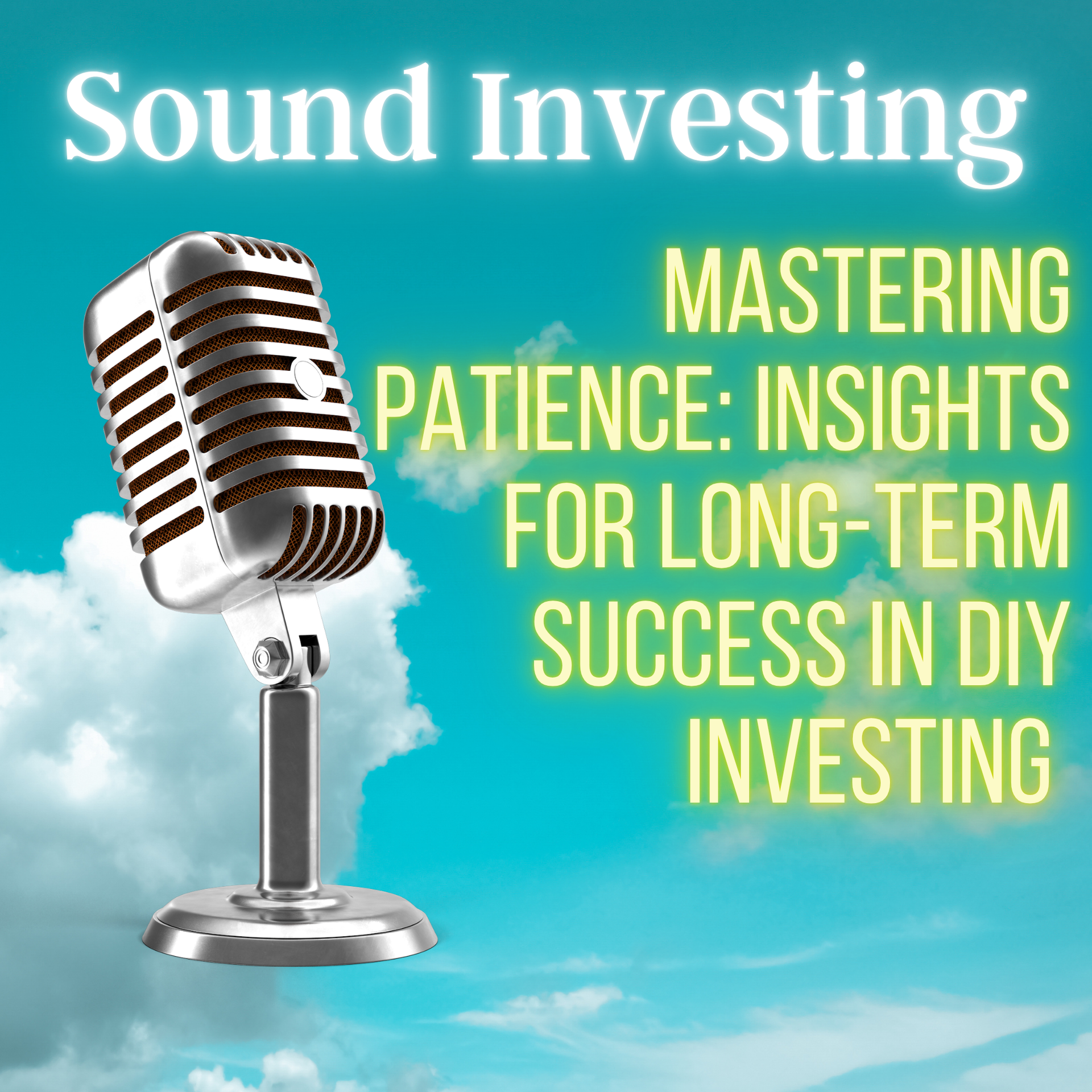
In this episode, Paul dives into one of the most important themes in long-term investing: staying the course, even when individual asset classes deliver unexpected short-term results. Whether you’re a seasoned DIY investor or still building confidence, Paul shares timely lessons to help you make better decisions—and support others who rely on your guidance. Paul also previews his upcoming presentation for the AAII Puget Sound Chapter , where he’ll take one of the deepest dives yet into Daryl Balls’ latest quilt charts, the Sound Investing portfolios, and the vital differences between traditional and non-traditional index funds. You’ll hear Paul discuss insights from two of the industry’s leading “truth tellers”: • Jim Dahle (The White Coat Investor) and his Bogleheads presentation on reasonable vs. unreasonable portfolios • Dr. Bill Bernstein , and why staying disciplined may be investors’ greatest lifelong challenge Along the way, Paul reviews 10-month, year-to-date performance for the Best-in-Class ETF portfolios—including the 10-fund, 4-fund, and 2-fund strategies—and explains why the surprising 2025 return patterns are completely normal. Key topics include: Why some equity asset classes “disappoint” this year—and why that’s expected The resurgence of international value, small international, and emerging markets How Chris Pedersen’s 4-Fund Worldwide strategy kept pace with the 10-Fund The powerful role of non-traditional index funds (DFA & Avantis) Why small-cap value’s recent struggles shouldn’t discourage long-term investors How to access DFA-style factor premiums through today’s ETFs The importance of keeping an investing approach simple, reasonable, and durable Why staying the course—not forecasting—is the true key to long-term success Paul also shares personal updates about moving back to Bainbridge Island and reflects on what it means to serve a community of dedicated DIY investors. If you know someone who would benefit from this work, please share this episode. And don’t miss the links in the show notes—including Jim Dahle’s video, portfolio references, quilt charts, and upcoming AAII registration details. Thank you for listening—and all the best to you and your family.

Paul Merriman welcomes back Chris Patterson, Director of Research, and Daryl Balls, Director of Analytics, for another thoughtful roundtable discussion. These three “underpaid volunteers” reflect on how far the Merriman Financial Education Foundation has come — and where it’s headed next. Together, they cover everything from new educational tools to a data-driven look at one of the most common investor questions: Has small-cap value lost its punch? The episode revisits this hot topic with evidence from decades of historical data, including several key Merriman Tables that illustrate why small-cap value (SCV) continues to deserve a place in long-term portfolios. Featured Tables and Charts 📊 Quilt Chart: Year-by-Year Performance of the Major Asset Classes Created by Daryl Balls, this visual “quilt” shows how the four major U.S. equity asset classes — large-cap blend, large-cap value, small-cap blend, and small-cap value — have rotated in and out of favor since 1928. The randomness of short-term returns underscores the importance of diversification and patience. Despite long stretches of average performance, small-cap value’s cumulative results remain powerful. ➡️ View the Quilt Chart on PaulMerriman.com 📈 Table G-1b: Fine-Tuning Table — S&P 500 vs U.S. SCV Equity Portfolio Outperformance Prepared by Daryl Balls, this 54-year comparison (1970–2024) demonstrates how small-cap value has consistently outperformed the S&P 500 over time. The two rightmost columns — highlighting rolling 15-year and 20-year outperformance — are especially compelling, showing that even after periods of apparent weakness, SCV regains its strength. ➡️ Explore Table G-1b: Fine-Tuning S&P vs SCV 📉 Tables B1, H2, H2A, and D1.4: Core Bootcamp Comparisons From the Foundation’s Sound Investing Bootcamp series, these tables reveal how diversified equity portfolios have performed versus the S&P 500, both in accumulation and distribution phases. They help investors see that broad diversification — especially adding small-cap value — historically improves returns and risk-adjusted outcomes. Table B1: All-Equity Portfolio Returns by Asset Class (1928–2024) Table H2: 60/40 Portfolio Distribution Outcomes (1970–2024) Table H2A: All-Equity Portfolio Distribution Outcomes (1970–2024) Table D1.4: Historical Equity Premiums and Drawdowns ➡️ See all Bootcamp Tables Why Small-Cap Value Still Packs a Punch Paul, Chris, and Daryl explain that small-cap value premiums come in bursts — often following years of average performance. As Paul notes, SCV has had multiple 15- to 20-year stretches of breaking even with the S&P 500, followed by explosive 3- to 10-year “catch-up” periods that deliver outsized gains. The data in Table G-1b makes this clear: over 54 years, SCV continues to deliver a meaningful performance edge. As Daryl reminds listeners, “those two columns on the right are powerful.” They show that long-term investors who remain patient — and maintain a disciplined exposure to small-cap value — have been well rewarded. Educational Takeaways Patience is the premium. Factor returns are unpredictable year to year, but history rewards persistence. Diversification is defense. Combining S&P 500 with small-cap value reduces regret during both booms and busts. Data over drama. The Foundation’s free tools, calculators, and tables are designed to help you make rational, informed choices for the long term. 🎧 Listen now on Spotify or YouTube to hear Paul, Chris, and Daryl discuss new tools like the Two Funds for Life Calculator , updates to the Best-in-Class ETF Recommendations , and their vision for the next generation of financial education.

In this practical and inspiring ETFatlas podcast episode, host Jack Lempart welcomes Paul Merriman for a return conversation focused on the biggest mistakes beginner investors make—and how to avoid them. The discussion reveals why most investing errors are emotional, not technical. Paul emphasizes that successful investing is usually simple, though almost never easy. Paul Merriman draws on decades of experience as an educator, advisor, and founder of the Merriman Financial Education Foundation to spotlight key pitfalls: Trusting the wrong advice Starting too late with investing Letting emotions drive decisions Chasing recent performance Paul’s conversation goes further, sharing actionable tips: How defensive investing and diversification protect you from major mistakes Practical ways to automate good habits and avoid behavioral biases Insights from both US and European market examples You’ll also hear why academic research has shaped today’s best investment practices. Paul strongly advocates: Automating decisions wherever possible Broad diversification Maintaining discipline during market turbulence Listeners receive clear advice on keeping investing simple, avoiding high fees, and building portfolios designed to withstand uncertainty. The episode closes with tips for further reading—including free educational resources and helpful links—to support every investor’s learning journey. Agenda Paul Merriman’s journey from stockbroker to financial educator and foundation founder Introduction to the most costly mistakes for beginners and how they can affect lifetime wealth Why trusting the wrong advice is potentially the biggest error investors make The importance of choosing academically sound, evidence-based sources over industry “experts” or neighbors Analysis of how starting too late in investing can dramatically reduce future wealth The emotional traps beginners face and the impact of behavioral biases on decision-making The problem of performance chasing and recency bias in investment choices Automating investments and the value of regular, disciplined contributions Why diversification is considered “the only free lunch” in investing by experts Advantages of keeping portfolios simple with solutions like target-date funds and low-cost ETFs Examples illustrating the massive impact of investment fees over decades The difference between defensive and offensive strategies in long-term market success Real-world lessons from market history, including US, Europe, and Japan How to avoid paralysis from choice overwhelm in a landscape of thousands of ETFs

Watch YouTube video here. Paul Merriman and Chris Pedersen tackle your biggest questions—from simplifying portfolios and picking best-in-class ETFs to understanding equal-weighted funds, tax efficiency, and how much small-cap value to own. They dig into factor investing (size, value, quality, profitability, momentum), why reversion to the mean matters, and how to think like an owner—not a speculator. Plus: mentors, work-life balance, and the real risk investors face. Chapters 00:00 – Intro & Mentors 05:07 – Portfolio Simplification 10:13 – Work-Life Balance 11:39 – Which ETFs will outperform? 20:15 – Importance of Quality 22:45 – Equal-Weighted Funds 26:14 – History: how long is enough? 29:58 – Cost of public indexing 33:30 – Equal-weight fund tax vs. ETF 35:21 – How much small-cap value? 39:47 – Why three EM ETFs? 42:28 – “All Avantis” risk? 49:45 – Technology sector history & mean reversion 53:00 – Be an owner, not a speculator 55:27 – Outro Key Takeaways “Best” ETF ≠ next year’s top performer—seek consistent factor exposure, low costs, broad holdings, and tax efficiency. Equal-weighting boosts small/value exposure but can increase turnover and tax drag; pairing large-cap blend with small-cap value can be more efficient. Decide small-cap value allocation by temperament (common range: 10–50% of equities when pairing with S&P 500/target date). Index approach vs. index label : DFA/Avantis are systematic and rules-based without telegraphing rebalances. Think like an owner : over decades, earnings—not sentiment—drive returns. Resources • Best-in-Class ETF Recommendations (2025): https://www.paulmerriman.com/best-in-class-etf-recommendations-2025#gsc.tab=0 • Sound Investing Portfolios, Returns & Risks: https://www.paulmerriman.com/sound-investing-portfolios#gsc.tab=0 • “Tune Out the Noise” (DFA Documentary): https://youtu.be/T98825bzcKw?si=kFMugnSSCn2E76sI

After a week with family, friends, and his longtime writing partner Rich Buck, Paul sat down to record this reflective new episode of Sound Investing. He opens with a story from his talk at Olympic College, where a student asked the question every new investor faces: “How can I trust the market when I might lose everything?” Paul’s answer is grounded in decades of data. He guarantees investors will lose money—sometimes—but never everything, if they’re diversified and disciplined. Using 75 years of historical returns, Paul examines three 25-year periods: 1950–1974: S&P 500 compounded at 10.1% 1975–1999: S&P 500 compounded at 17.2% 2000–2025: S&P 500 compounded at 8.3% He compares these with the Four-Fund Strategy, where equal allocations to large-cap value, small-cap blend, and small-cap value produced a 9.4% average annual return over the last 25 years—versus 8.3% for the S&P 500 alone. Paul also highlights a striking finding: The equal-weighted S&P 500 (VADDX / RSP) outperformed the traditional cap-weighted index, compounding at 9.9% versus 8.3% since 2000. “Equal weighting rewards the underdogs—smaller companies that are temporarily out of favor,” Paul says. “It’s a built-in way to lean toward value and size premiums.” Finally, he revisits the Small Cap Value Index, where DFA’s real-time fund (DFSVX) returned 11.1% versus 8.3% for the S&P 500—proving once again that diversification across size and value continues to pay off for long-term investors. Paul concludes with this reminder: “We can’t buy the past, but we can learn from it. Every extra percent of return—earned through disciplined diversification—can change a lifetime of outcomes.”
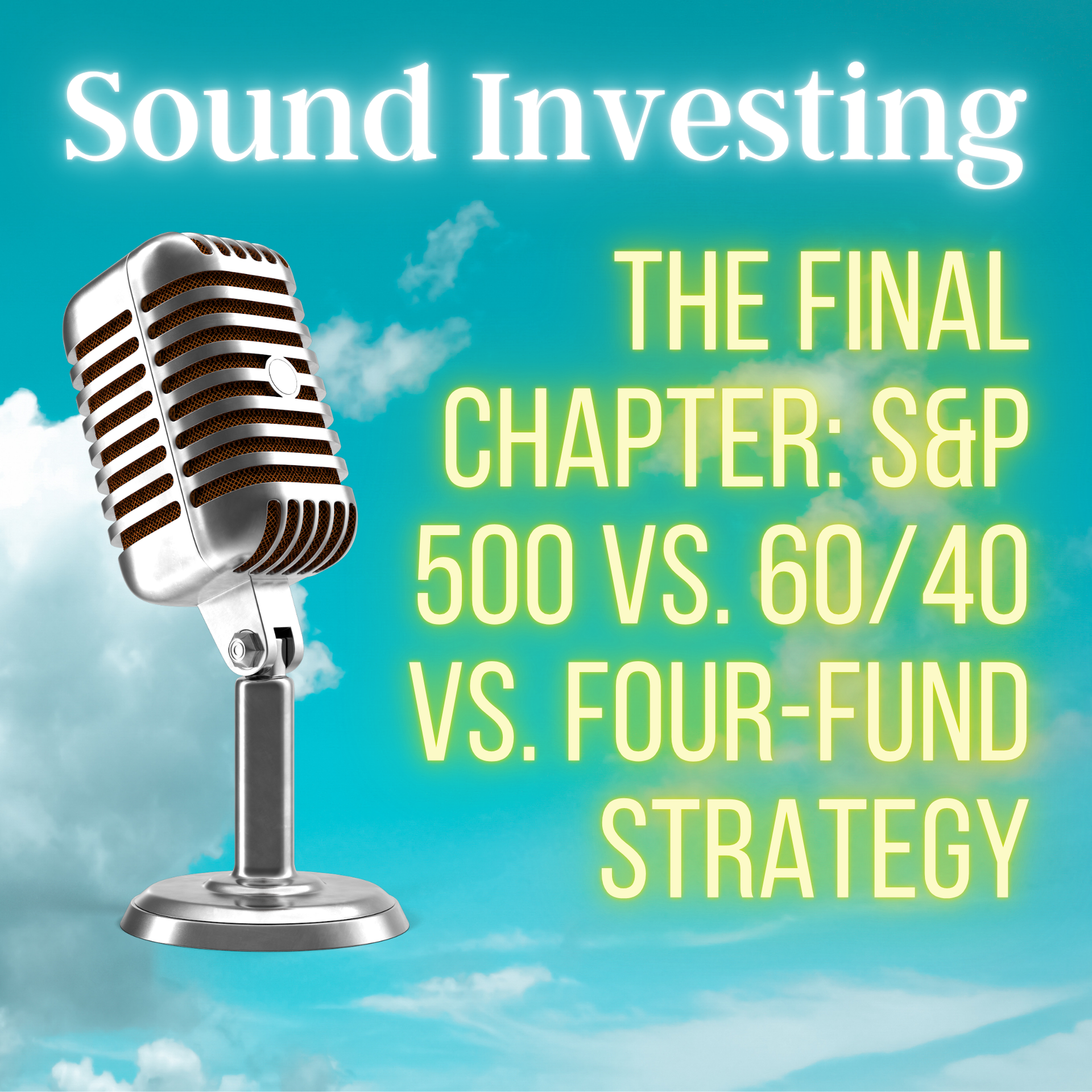
This episode concludes our four-part series on two “radical” portfolio choices—investing all-equity for life versus adopting a more balanced 60% equities / 40% bonds approach. In this final session, Paul goes beyond the S&P 500 to examine the U.S. Four-Fund strategy (large-cap blend, small-cap blend, large-cap value, small-cap value). The goal? To see whether spreading risk across more equity asset classes can deliver higher returns with similar risk compared to relying solely on the S&P 500. Key Tables to Review Paul highlights four critical tables from the Bootcamp series. You can view them all on paulmerriman.com : Table B1 - Fine Tuning Table: S&P 500 Equity Portfolio Table B4 - Fine Tuning Table: US 4-Fund Equity Portfolio T able C4 - Fixed Contributions ($1,000/yr): US 4-Fund Equity Portfolio Table D4.4 - Fixed Distributions (Conservative-$40,000/yr): US 4-Fund Equity Portfolio Table H2 – Sound Investing Portfolios (100% Equity) Table H2A – Sound Investing Portfolios (60/40) Table D1.4 – Fixed Distributions ($40k + inflation) Lessons for Investors Risk vs. Reward: Diversification improved long-term results with little added downside. Distribution Matters: In retirement, portfolio structure determined whether investors ended with $6 million or nearly $20 million. Numbers Over Stories: While investing stories capture attention, the tables show the long-term reality. For deeper study, explore all the Bootcamp tables and supporting resources at paulmerriman.com .

Welcome to the third episode in our four-part series exploring radical investment strategies—going “all in” with an all-equity portfolio versus choosing a balanced approach of 60% equities and 40% bonds. In our first two episodes, we focused on the accumulation years—how these portfolios grew wealth from the early stages of investing to the point of retirement. Today, we shift gears to ask the big question: What happens when it’s time to start taking money out? Using 55 years of historical data from 1970–2024, Paul Merriman compares: All S&P 500 Portfolio : The high-growth but high-risk approach 60/40 Portfolio : A balanced strategy blending stocks and bonds This episode digs into the distribution phase, showing how these portfolios handled major market downturns and sustained income over decades. What We Cover Recap of Accumulation Findings : Performance leading up to retirement using: Table B1 : Fine-Tuning Table for S&P 500 Equity Portfolio Table H2 : 60/40 Balanced Portfolio Data Table H2A : 100% Equity Portfolio Data Retirement Withdrawals : Real numbers from Table D1.4 with fixed distributions of $40,000 per year, inflation-adjusted Market Volatility : The impact of big crashes like 1973–74, 2000–2002, and 2008 on retirement income Bond Protection : Why bonds served as a shock absorber when markets crashed Lessons for Investors : Understanding risk, return, and the emotional side of staying the course Key Takeaways All-equity portfolios can build bigger balances—but they also expose retirees to deep, gut-wrenching losses when markets collapse. A 60/40 approach often produces steadier, more predictable income, sometimes finishing with more wealth despite slower growth in good years. Historical data offers valuable lessons, but it also reminds us that the future will bring its own surprises—making diversification critical. Whether you’re decades from retirement or already in it, this episode will help you understand the trade-offs between growth and stability when you start living off your investments. Next week, Paul will analyze the U.S. 4 Fund Strategy for retirement withdrawals.
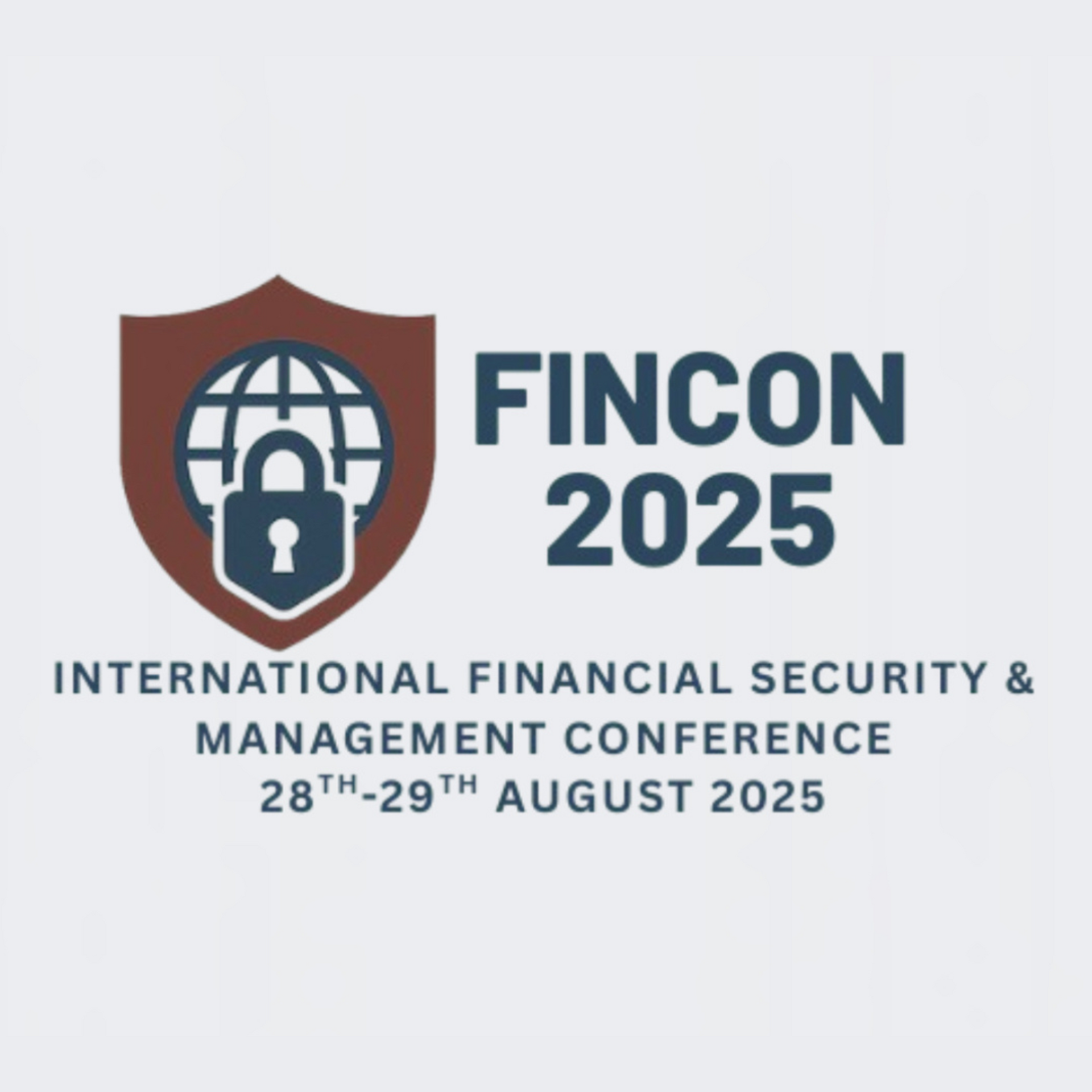
At FinCon, Chuck Gaffe- moneylifeshow.com sat down with Paul for a wide-ranging conversation about investing and financial independence. Paul shared insights on the rise of index funds, the FIRE movement’s “one-fund-for-life” approach, and how small portfolio adjustments can boost long-term returns. He also discussed timeless investing principles like staying the course, understanding risk, keeping costs low, and diversifying wisely. At FinCon, Paul reflected on everything from the rise of index funds to the FIRE movement’s “one-fund-for-life” strategy. His message was clear: while simple investing solutions can work, small, thoughtful adjustments—like adding different asset classes—can meaningfully improve long-term returns. Paul also emphasized timeless investing principles: Stay the course. Don’t bail when markets turn volatile. Understand your risk. Know how much you can afford to lose before the storm comes. Avoid unnecessary costs. A fraction of a percent in fees can add up to millions over a lifetime. Diversify wisely. A broad mix of assets offers protection and opportunity across market cycles. Whether discussing crypto, ETFs vs. mutual funds, or portfolio allocation strategies, Paul’s advice always comes back to one goal: helping investors achieve financial independence with confidence and peace of mind.
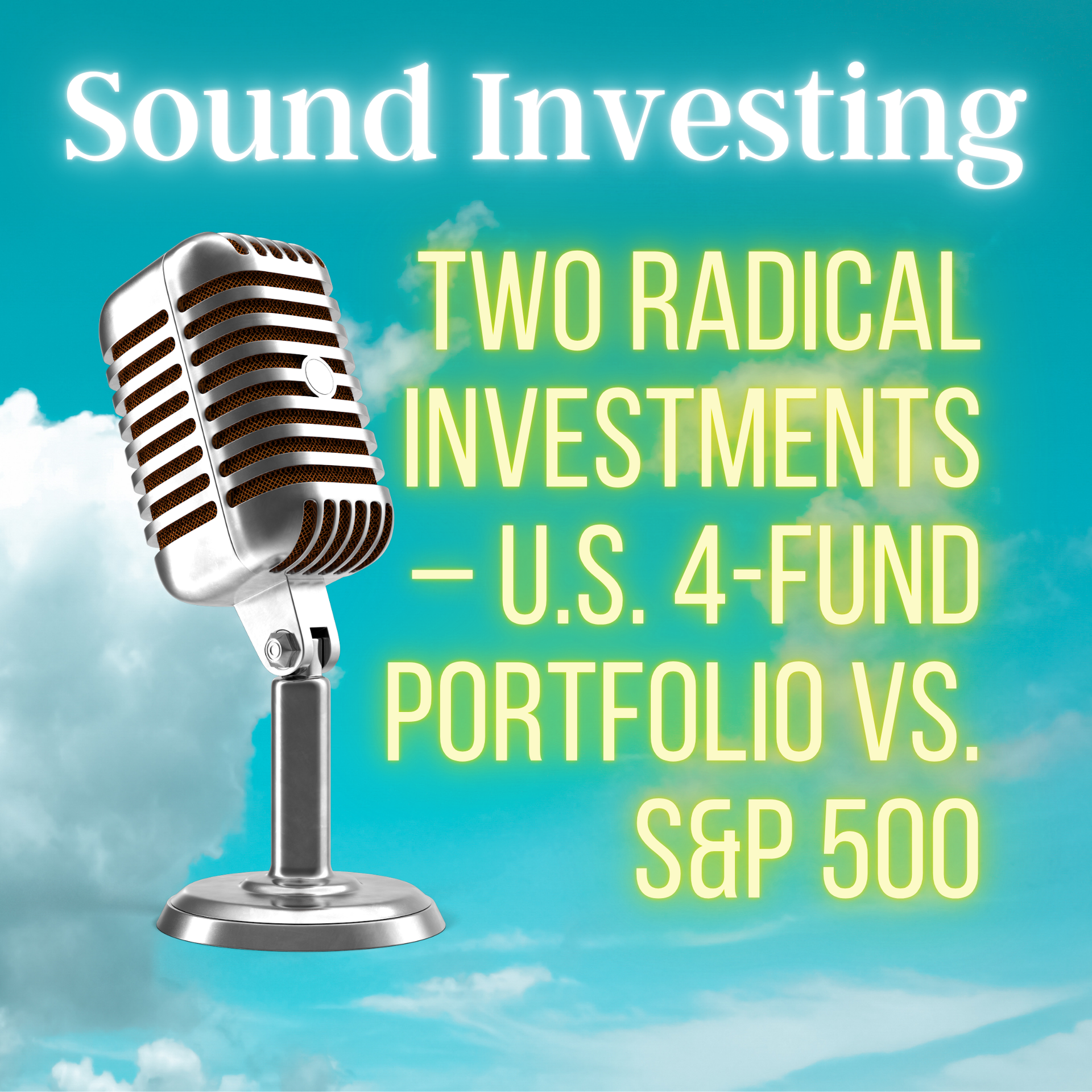
Paul Merriman continues his 4-part series exploring two “radical” investment strategies: Two Radical Investments: All equities all the time and 60% Equities 40% bonds for Life. This segment focuses on the accumulation phase—comparing the performance of the U.S. 4-Fund Portfolio with the S&P 500 over a 55-year period. Paul walks through historical returns, risk comparisons, and the role of diversification in building long-term wealth. He explains how the 4-Fund strategy (Large Cap Blend, Large Cap Value, Small Cap Blend, Small Cap Value) stacks up against the S&P 500, whether you stay 100% in equities or use a balanced 60/40 approach. Key insights include: How the 4-Fund strategy’s higher historical returns come with only slightly more volatility. Why the 60/40 approach offers a powerful balance between risk and reward. The role of good times vs. bad times in shaping long-term outcomes. Decade-by-decade performance analysis, including periods of bull markets, bear markets, and major drawdowns. Paul also highlights the tables you’ll want to download and follow along with as he explains the numbers: Table B1: Fine-Tuning Table – S&P 500 Table B4: Fine-Tuning Table – U.S. 4-Fund Portfolio Table H2a: Sound Investing Portfolios – 100% Equities Table H2: Sound Investing Portfolios – 60/40 Portfolios Table C1 & C4 : Fixed Contributions for Accumulation Analysis Next Episode Preview: Next week, Paul will continue the series by exploring the distribution phase —looking at what happens when you start withdrawing from your portfolio using the same all-equity vs. 60/40 strategies. Listen & Learn: Whether you’re an all-equity investor or lean toward a balanced portfolio, this episode will give you a clearer picture of how portfolio composition impacts long-term returns, volatility, and retirement readiness.

Paul Merriman explores one of the most important decisions every long-term investor faces: Should your retirement savings be invested entirely in equities, or should you balance your portfolio with a mix of stocks and bonds? Paul compares two “lifetime” investment strategies: 100% Equity Portfolio (S&P 500): Maximum growth potential, but maximum volatility. 60/40 Portfolio (60% Stocks / 40% Bonds): A classic “balanced” approach with reduced risk. Using data from multiple decades and several key tables— Table B1 Fine Tuning Table: S&P 500 Equity Portfolio Table H2a Sound Investing Portfolios (these portfolios are all 100% equities) Table H2 Sound Investing Portfolios (these portfolios are all 60% equities/40% fixed income) (NEW) Table C1 Fixed Contributions ($1,000/yr: S&P 500 Equity Portfolio —Paul reveals how each portfolio would have performed over 55 years of accumulation and retirement, comparing growth, risk, and long-term sustainability. You’ll discover: How often 60/40 actually outperformed 100% equities during downturns. Why volatility, drawdowns, and risk matter as much as returns. The “half the risk” advantage of the 60/40 strategy. How consistent contributions—whether $1,000 or $6,000 per year—grow dramatically over time. Finally, Paul previews the next podcast, where he’ll compare the same 100% vs. 60/40 strategies using the U.S. 4-Fund and Worldwide 4-Fund portfolios. Key Takeaways: 100% equities historically delivered higher returns but with far greater volatility and deeper drawdowns. The 60/40 portfolio captured most of the returns with roughly half the risk. Consistency, time horizon, and investor temperament all matter when choosing your “lifetime” portfolio strategy.
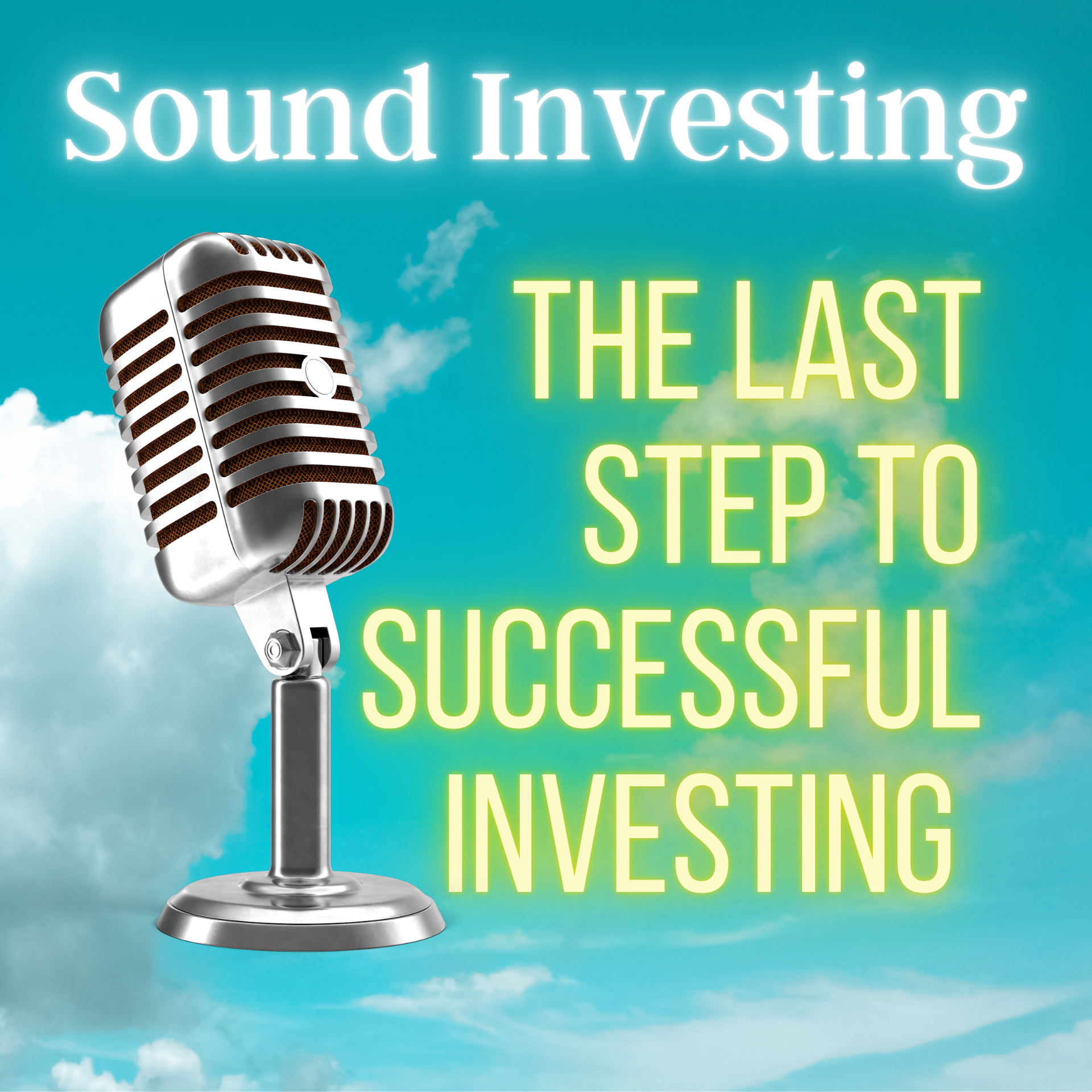
Paul starts this letter beginning with a letter from a listener . The letter ends with the reason why our work has had more impact than John Bogle and Benjamin Felix (Both Truth Tellers). The rest of the podcast is focused on a recent article- The Evolution of Financial Advice , by Ben Carlson. The focus is on the math, history and psychology of investing. Paul concludes that most steps to successful investoring are well documented. But two areas are still open for fine tuning: Portfolio construction and fund selection. To help in that Paul recommends three Boot Camp Presentations: Fine Tuning Your Asset Allocation , Fixed Contributions and Fixed Distributions .
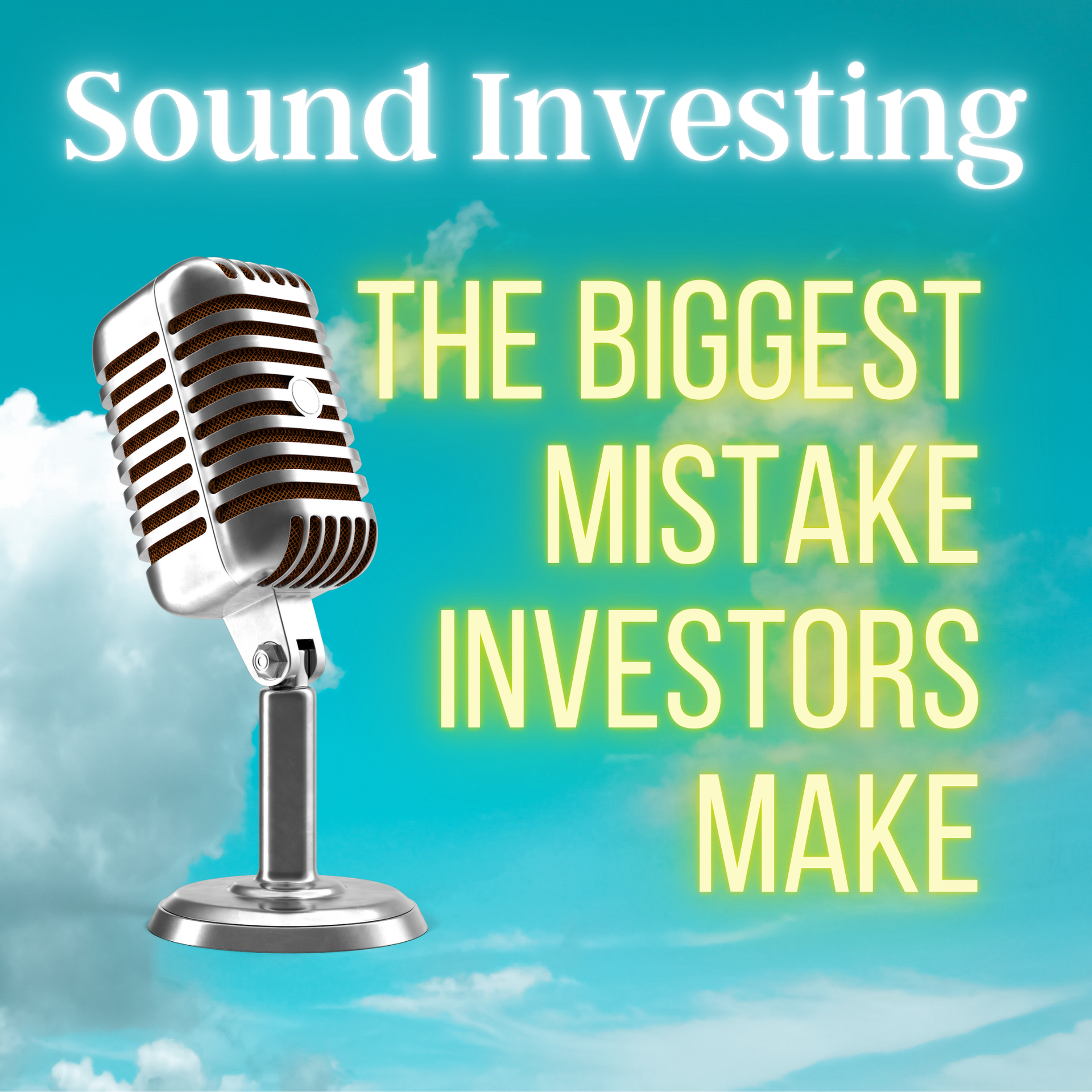
What’s the single biggest mistake investors make? It’s not starting too late, saving too little, or even chasing hot stocks—it’s trusting the wrong advice. Too often, investors are told there’s only one “right” path: stay 100% in equities for life. Nick Murray, for example, argues it’s an “atrocity” to shift into bonds in retirement because equities historically return 7% after inflation compared to 3% for bonds. Why would anyone add bonds, even in retirement? History offers the answer. Stocks do outperform bonds long term, but they also suffer brutal declines. A retiree who entered the market in the mid-1960s, or one who bought technology stocks in 2000, endured losses of 50–80% and often waited decades to recover. That kind of drawdown can be devastating when you’re living off savings. This is why many investors embrace balance: the classic 60/40 portfolio has historically delivered about 85% of the S&P 500’s return with roughly one-third less risk. So how is diversification working today? In 2025, the Ultimate Buy and Hold Portfolio—Paul Merriman’s all-equity mix of U.S. and international asset classes—has delivered an impressive 18% so far this year, with international value and small-cap stocks leading the way. But past returns are only part of the lesson. The real takeaway is that chasing recent winners isn’t a strategy—it’s recency bias. Diversification remains the most reliable tool for long-term investors. That brings us to another timeless question: how much Small Cap Value should an investor add to VTSAX (Total Market Index)? Research shows that allocating 20–30% of equities to Small Cap Value has historically boosted returns by about 1% per year. Over decades, that extra percentage can mean retiring earlier, protecting against running out of money, or leaving a larger legacy. But it comes with higher volatility—small-cap value funds fall harder in downturns, even if they often recover stronger. Ultimately, successful investing isn’t about finding one perfect asset class. It’s about balancing growth, risk, and peace of mind. Some investors can handle the rollercoaster of an all-equity portfolio. Many others need the stability that bonds, balanced funds, and broader diversification provide. The key is knowing yourself, your goals, and your tolerance for loss—because the biggest mistake isn’t owning the wrong fund. It’s building a portfolio that doesn’t let you sleep at night. During the podcast Paul references Table G-1b, Fine Tuning Table: S&P 500 vs. US SCV Equity Porfolio - Out-Performance and Table H2a - Sound Investing Portfolios: Comparison Data , Quilt Chart K1a . He also points to Chris Pedersen’s Best In Class ETF Recommendation s and his 2 Funds for Life returns table . These resources provide valuable context for comparing U.S. vs. international returns, equity vs. bond allocations, and how small-cap value can enhance a long-term strategy.

Paul Merriman shares his excitement about the upcoming 2025 Bogleheads Conference (October 17–19), one of the most important gatherings for long-term investors. This year’s lineup includes Vanguard CEO Salim Ramji , Christine Benz, Bill Bernstein, Alan Roth, Rick Ferri, Jim Dahle, and more. Paul will attend all three days, eager to meet listeners and discuss future projects. For those unable to attend, every presentation will be recorded and posted on the Bogleheads YouTube channel a few months later. Looking ahead at the program, Paul highlights sessions he doesn’t want to miss—Christine Benz on retirement withdrawal strategies, Bill Bernstein’s fireside chats with financial historian Mark Higgins, and presentations on factor investing, tax efficiency, and the FIRE movement. He’s especially drawn to conversations about teaching students to invest, a cause close to his heart. Paul also revisits some of his core lessons. He explains why small-cap value stocks have historically outperformed the S&P 500, showing that a $10,000 investment in small-cap value at the start of the 2000s would have more than doubled the returns of the same money in the S&P 500. He also reviews the Four-Fund Strategy , which balances simplicity with diversification, making it easier for investors to stay the course for life. Tax efficiency is another major theme. Paul shares strategies for making the most of 401(k)s, IRAs, Roth accounts, and taxable portfolios—placing REITs and high-turnover funds in tax-sheltered accounts while using ETFs in taxable ones. He also encourages investors to check whether their employer plans offer self-directed options that open up more asset classes. Paul devotes part of the episode to financial education for young people. He spotlights a free tool from NGPF.org called the Question of the Day . These short, real-world prompts—like “How much money did Americans lose last year to cryptocurrency scams?” ($5.6 billion) and “What percentage of Bitcoin has been lost forever?” (around 20%)—are designed to spark meaningful conversations at home or in classrooms. For Paul, it’s a practical way to help the next generation become confident investors. Naturally, the subject of cryptocurrency comes up. Paul shares the story of Bitcoin Pizza Day , when 10,000 BTC were traded for two pizzas in 2010—a reminder of both the explosive upside and the volatility of speculative assets. He then shifts to a lighter moment, reading a poem he wrote with the help of Chatgpt in the playful style of The Music Man. The poem captures the hype, humor, and risk of crypto investing: Either you're mining or memeing, or maybe it's doge you're redeeming, but folks, let me tell you what's really steaming. It's not stocks, bonds, or CDs. No, ma'am. It's coins without fees. You heard me. Fees. Zero fees. But sky high. Volatility. You got crypto right here in River City with a capital C, and that rhymes with B, and that stands for bubble. Yes, you got crypto. That's right. And it's risky, not subtle. It's a get-rich dream wrapped up in a scheme that would go down like rubble. Now I know some folks think it's the future. Decentralized, sleek and secure. But when TikTok stars start giving advice, you better grab your wallet and think twice. NFTs and pump and dumps, wallet keys lost in digital dumps, fortunes made at the stroke of a tweet, then vanished faster than meme stock heat. You got trouble. Right here in River City, that stands for "C" and that rhymes with "B" and that stands for "Bitcoin." Yeah, got trouble. You better lock up your savings before you stake your Roth on a blockchain dream that's driven by cravings. Do you know what happens when you miss the password to your cold storage wallet? You lose everything. Do you know how many coins are lost forever? About 20%, poof. Do you think a JPEG of a rock is an investment? Think again. I say we go back to what works, not what's flashy: broad market funds, low cost, and classy. A thousand companies in a single ETF— now that's a bet that won't leave you bereft. Long-term gains beat moonshot pain. You don't need to YOLO into crypto terrain. Yes you got crypto right here in River City with a capital C, and that rhymes with B and that stands for beware. We've got fear of missing out, hype without care. But if you follow Bogle's way, you'll get there. The episode wraps with a listener’s question about whether small-cap blend funds deserve a place in a portfolio. Paul stresses that the key is knowing yourself as an investor. Historical data favors value, but long-term success depends on building a portfolio you can live with through every market cycle. Paul closes by reminding listeners that investing success isn’t about chasing the hottest trend—it’s about crafting a plan that fits your goals, tax situation, and temperament. Whether you’re heading to the Bogleheads Conference, teaching kids about money, or refining your own strategy, this episode blends practical insights, historical lessons, and even a bit of humor to help you stay the course.
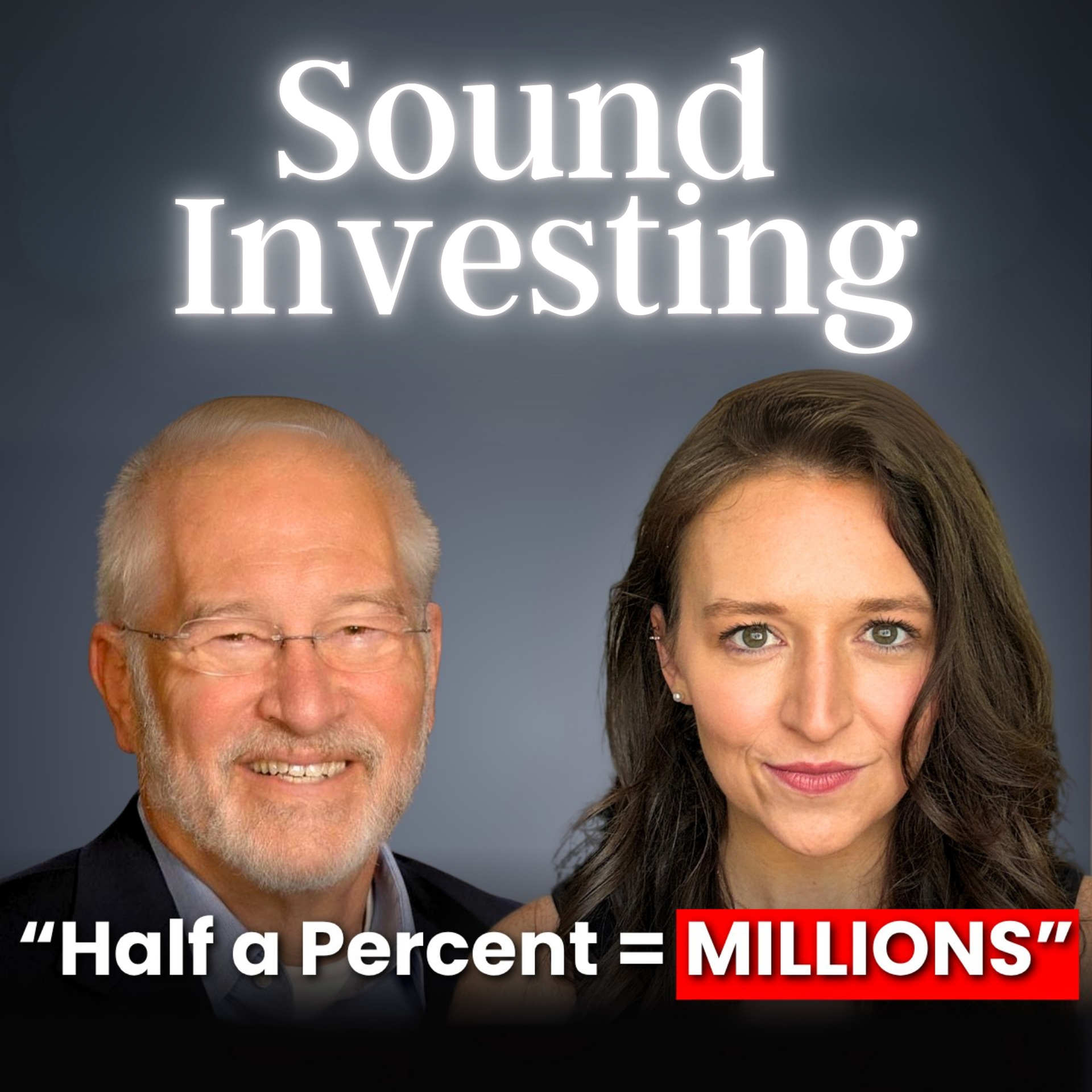
I had never heard of Erin Moriarity before she contacted me about having a conversation with her on “Erin Talks Money.” When I visited her Youtube channel I immediately realized what a powerhouse she is. She has over 200,000 subscribers to her Youtube channel and her videos are terrific. She has over 800 videos on topics most young investors or beginners at any age need to see. 36 videos on budgeting, 133 on retirement, and much more. Recently she started interviewing old experienced “experts." Her first two guest interviews were Ed Scott and Bill Bengen. I felt honored to be a part of a team who want to help teach her followers. Plus, if you read the comments on the YouTube video it’s obvious she has a large group of loyal followers. By the way, her followers made me feel very welcome. "Erin, that was an absolute Masterclass in investing! Thanks for bring Paul to your channel. I enjoyed seeing how comfortable you and the guest were and how the conversation naturally flowed between topics. I’m going to make sure my kids view this. Advice and insights for LIFE!" "Excellent video, Erin! How do we know Erin is a force in investing advice? Look at the people she's had on her channel! I'm thankful to Erin not only for the great advice, but she is someone I can show my daughters, ages 21 and 25, and go "Look at Erin. If she can invest and make good choices w her money, so can you!". This means the world to me for them to see someone they can relate to, who disseminates complicated ideas and concepts in an understandable way. And BTW, I confirmed I'm subscribed to her channel “ 0:00 Introduction & Meet Paul Merriman 2:14 The Power of Starting Early (For You & Your Kids) 7:14 100% Equities for Young Investors & Avoiding Overexposure to the S&P 500 14:02 Predicting Future Returns, Compounding & Patience 22:27 Market Cycles, Psychology & Preparing for Bad Times 25:12 Choosing the Right Portfolio Complexity (Levels 1–3) 34:08 Traditional vs. Non-Traditional Index Funds & Vanguard Loyalty 41:34 Why We Own the Whole Market & The Case for 60/40 46:19 Staying the Course, Chasing Returns & Capturing Extra Gains 57:00 How Investing Has Changed & Automatic Enrollment Benefits 1:01:45 Knowing When You Have Enough & The Rise of Hourly Advisors 1:08:44 The 3 Things Every DIY Investor Should Do & Closing Thoughts Watch the video here

What’s holding investors back from building real wealth? Talking Real Money , hosts Don McDonald and Tom Cock take aim at the 10 most damaging myths, lies, and mistakes that cost investors big—often millions. You’ll learn: Why "having a guy" isn’t a strategy—it's a setup Why predicting the market is like calling a psychic How starting too late can cost you over half a million The hard truth about individual stocks, expensive advisors, and false promises of risk-free wealth Why diversification, low costs, and understanding your real risk profile actually work This is no ordinary investing talk. Don McDonald , a 34-year financial talk radio veteran , and Tom Cock , the former host of Serious Money on PBS , join forces to cut through financial jargon and expose what really works. In every episode, they solve real money problems, share smart long-term strategies, and bring clarity to the complex financial issues that affect all of us. Talking Real Money is designed to give you the real help you need for a really great financial future —and yes, it’s actually fun to listen to. Bonus shoutout: Don McDonald also generously donated his time to narrate the audiobook version of Paul Merriman’s bestselling book, “We’re Talking Millions!” His voice brings the content to life with clarity, energy, and heart. He’s not only a brilliant communicator—he’s also a phenomenal reader . Listen to the audiobook here.
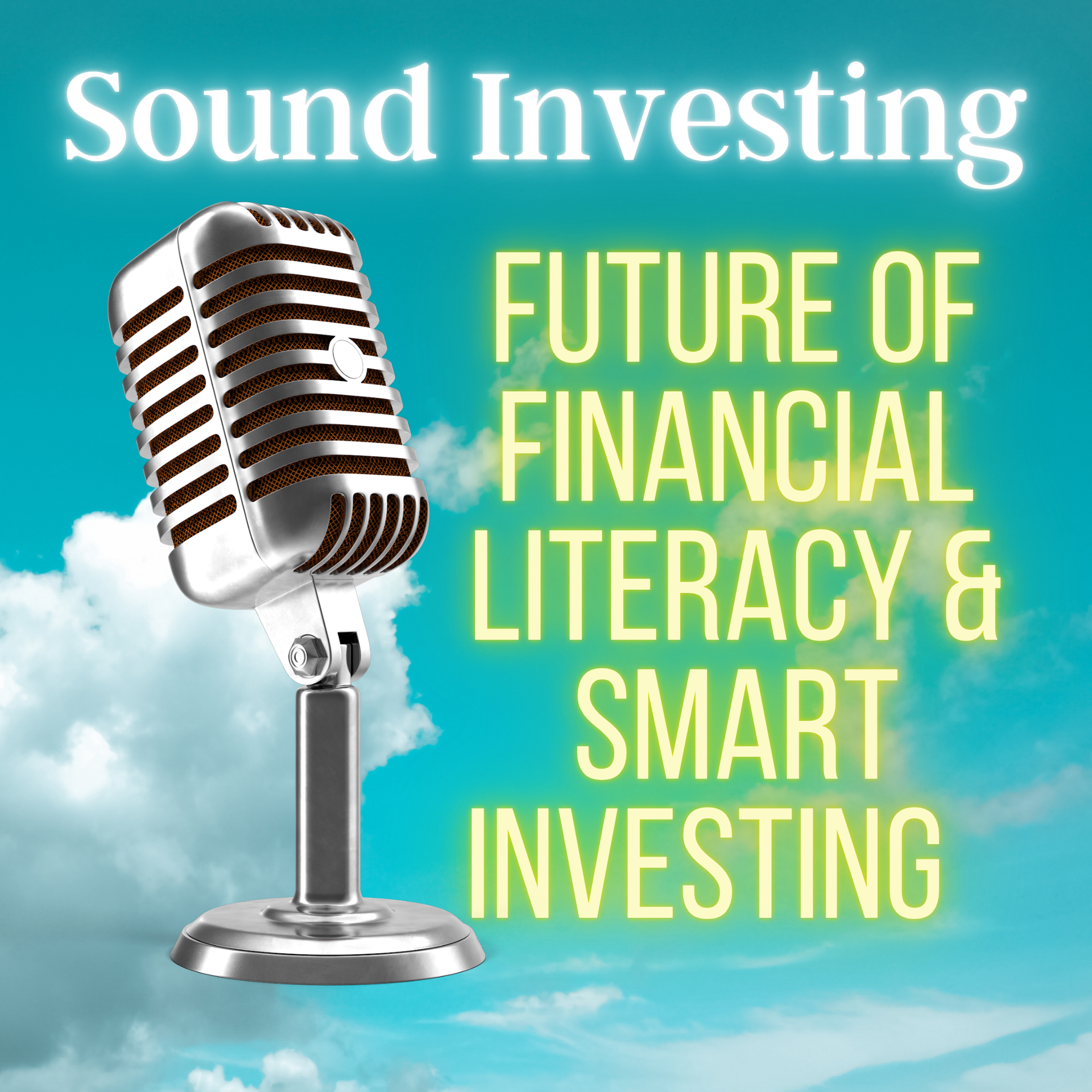
On this special Q&A episode—recorded July 29 2025 —Paul Merriman gears up for his August 2 keynote at the Garrett Planning Network Retreat , where he will address more than 100 hourly financial advisors about the future of financial literacy. He invites listeners to email questions for the panel ( paul@paulmerriman.com ) and then dives into ten wide‑ranging listener questions that benefit investors of every age and stage. What you’ll learn Adding QQQ to the 10‑Fund “Ultimate Buy‑and‑Hold” portfolio: upside vs. hidden downside. Toughest markets Paul has faced —from the 1966–1981 whipsaw to the 1987 crash—and the timeless lessons they teach. Global diversification in 2025: 50/50 vs. 70/30 U.S./international and why volatility, not return, drives the decision. Table B4 , Table B3a and Table B3b Small‑Cap Value vs. S&P 500 performance: 1975‑1999’s 5 % premium, 2000‑2025’s 2.6 % edge, and what it means going forward. Avantis + DFA split for deeper diversification (cost, holdings, tracking error). Risks of an all‑Small‑Cap‑Value portfolio and when a worldwide all‑value approach makes more sense. Using DFA International Small‑Cap Value (DFISX) inside a 403(b) for a Two‑Fund strategy. Vanguard STAR vs. Vanguard Wellington: balanced‑fund showdown and why Wellington’s 60/40 mix wins in the long run. Rebalancing at age 62: tax‑smart moves, asset‑location tactics, and simplifying with target‑date or balanced funds. Anatomy of the Ultimate Buy‑and‑Hold strategy : 10 equity asset classes, why it started in 1994‑95, and how four‑ and two‑fund variations stack up. Sound Investing Portfolio Returns (1970-2024) 50/50 and Sound Investing Portfolio Returns (1970-2024) 70/30 Paul backs every takeaway with real‑world data—from DFA, Avantis, Vanguard, and Russell indexes—illustrating how disciplined asset allocation can tame the brutal drawdowns that crush performance when investors chase recent winners. You’ll hear why trend‑following protected clients in 1987, how dividends rescued returns in the 1966–1981 “go‑nowhere” market, and why low‑cost indexing plus global value exposure remain his bedrock recommendations. Got a question for Paul’s hourly‑advisor panel? Email it before July 31 and help shape the conversation on transparent, client‑first advice. Listen now to sharpen your strategy—whether you’re building wealth, 20 years from retirement, or fine‑tuning a 50/50 portfolio in your 60s.

In this episode, Paul Merriman shares insights into upcoming events, including his presentation at the Garrett Planning Network Retreat, as well as his reflections on asset allocation, government bond strategies, and the benefits of various portfolios for different life stages. Tune in for a deep dive into how different funds and asset classes perform over the long term, and how to optimize your investment strategy, regardless of age or risk tolerance. Key Topics Covered: 1. Long-Term Returns Comparison Paul compares two small-cap value funds: the Vanguard Small Cap Value Fund (VSIAX) and the DFA Small Cap Value Fund (DFFVX). To find long-term returns for these funds, Paul uses Morningstar’s chart function , which allows users to view the maximum (MAX) historical data for any given fund, helping to compare the performance of these funds since their inception 2. Best Asset Allocation for Retirees The best asset allocation for retirees typically depends on individual factors, such as risk tolerance and life expectancy. Generally, Paul suggests a moderate equity allocation of 40-60% in stocks, with the rest in fixed income, for retirees who have enough saved up to comfortably fund their retirement . 3. Asset Allocation for an 83-Year-Old Retiree For an 83-year-old retiree, Paul discusses a more conservative portfolio with two-thirds in bonds and one-third in equities . This conservative approach, which mirrors the allocation in Vanguard’s target-date funds, aligns well with retirees who are less reliant on aggressive growth but still need some equity exposure to combat inflation . 4. Why Use Three Government Bond Funds? Paul advocates for a diversified bond strategy that includes TIPS (Treasury Inflation-Protected Securities), short-term government bonds, and intermediate-term government bonds . This combination offers a balance of safety, growth potential, and reduced volatility compared to using just one bond fund, and provides a more stable return over time. 5. How the Worldwide 4 Fund Portfolio Works The Worldwide 4 Fund Portfolio is structured with 25% in large-cap blend (U.S), 25% in large-cap value (INTL), 25% in small-cap blend (INTL), and 25% in small-cap value (U.S.) , giving you a diversified mix of U.S. and international equities. This approach optimizes for both size and value , ensuring a balanced exposure to market growth, volatility, and global investment opportunities. 6. Should a 26-Year-Old Use the 2 Funds for Life Portfolio Yes, a 26-year-old could benefit from the 2 Funds for Life Portfolio , which typically includes the A TARGET DATE FUND and a small-cap value fund . This strategy allows young investors to focus on equity growth, benefiting from the long-term appreciation potential of small-cap value stocks while minimizing risks associated with bonds at an early stage 7. Managing the 2 Funds for Life Portfolio with S&P 500 & Small-Cap Value For someone using only the S&P 500 and small-cap value fund , Paul suggests a flexible allocation approach. You might start with a 50/50 split , or adjust according to your risk tolerance. The small-cap value fund tends to be more volatile but offers higher returns over time, while the S&P 500 provides more stability with lower volatility . 8. Can There Be a 3 Funds for Life Portfolio? Yes, a 3 Funds for Life portfolio could include the S&P 500 , large-cap value , and small-cap value . Paul suggests mixing these three equity asset classes to achieve a balanced portfolio that offers growth potential without overexposing yourself to risk. Resources: 1928-2024 Quilt Chart (K1a) Sound Investing Table (H2a) Chris Pedersen’s 2 Funds for Life table .

In November 2020 The Merriman Financial Education Foundation released “We’re Talking Millions! 12 Simple Ways to Supercharge Your Retirement.” The purpose of the book was to focus on a series of very simple steps any investor might take to improve their financial future. "Understanding how to invest wisely for your future can be daunting. Many people never get started for fear of making mistakes. Others make choices based on hearsay and hope, sold on hype or risk aversion. In "We're Talking Millions!" you will learn why and how to make a handful of smart choices that can turn modest regular savings into a secure future. You'll discover "12 Small Steps with Big Payoffs," each of which can add $1 million or more to your retirement nest egg if you start in your 20s or 30s. These steps are well known.” The book has had a huge impact on an untold number of readers. The numbers are unknown because the Foundation offer the book free as a pdf , as well as a free link to the audio version that was read by Truth Teller Don McDonald. While the book has had almost 400 online Amazon reviews (averaging 4 1/2 stars), the approximately 100 written reviews have over 95% 5 star ratings. Here is one from a young student (age 19 at the time) who is now in medical school! 5.0 out of 5 stars Life-changing book for young people interested in investing Reviewed in the United States on December 17, 2020 Format: Paperback Verified Purchase "We're Talking Millions" was a life-changing book. I am a 19 year-old college student who was directed toward Mr. Merriman's book as a great resource for first time investors. His book was the perfect resource for someone with little to no prior knowledge about investing. It starts by outlining the twelve steps to boost a retirement fund, listing tips and tricks along the way. One of the most helpful parts for me was that all of the investment lingo was clearly defined and explained, and I could get a very clear sense as to how each of these small steps fits into the overall puzzle. The book then outlines how to get started: explaining the "Two Funds for Life" investment plan, what investment companies are best to use, and suggesting specific investment funds. I cannot recommend this book enough!! I feel confident about my investment plan after reading this book, and I plan to share it with as many of my peers as possible. I have already given it to my sister and best friend. If you are looking for information about investing and don't have the energy to read a long, dense investing book, then " We're Talking Millions" is the book for you! It is interesting, short, and extremely informative, and I hope that it helps you as much as it helped me. Now Paul has recorded this podcast and video to discuss the 12 steps. The video was produced as part of a special offering to introduce Western Washington University alumni to The Merriman Financial Literacy Program that is working to educate all WWU students on the personal finance topics that will be an important part of their future. Our hope is you will pass along these links to others in your life who might benefit from this free educational information. Is there someone in your life you think could benefit from the discussion of these 12 huge decisions? Here are several ways to access this information: The following link is to a free pdf of our book, "We’re Talking Millions! 12 Simple Ways to Supercharge Your Retirement.” A second and third link takes you to a 2 hour video and podcast on the 12 million dollar decisions. And finally a very short (12 minute) podcast or video review of the 12 decisions .

Many of you have been submitting thoughtful questions through our AI chat, particularly on fund selection, asset allocation, and broader investment strategy. It’s encouraging to see this level of engagement with the core principles that shape long-term financial success. While the AI generally provides sound and efficient guidance, there are times when its responses lack the nuance or clarity that experience can bring. To provide deeper context and help you make more informed decisions, I’ve selected several recent questions to address—drawing from the AI’s suggestions where appropriate and adding insights based on decades of research and practice. One brief correction from a recent update: I previously mentioned a resource for ETF investors in Canada, Europe, and the U.S., but misspoke on the name. The correct website is ETFAtlas.com . Jack, the developer behind it, is creating a valuable tool for globally minded investors. Your candid feedback—what’s working well and what could be improved—will be essential as he continues building out the platform. Look for additional features to roll out in the months ahead. Your Top Questions Answered Let's jump right into what's on your mind. What Sound Investing Portfolio does Paul use and why? You know I love talking about this, and for those who aren't familiar, you can find all our "Sound Investing" portfolios on Table H2A on our website. You'll see how different portfolios compare in terms of risk and return over decades—it's pretty eye-opening! I'll be sharing what I personally do, and why I like massive diversification. It's not about hitting a home run for me; it's about being prepared for the long haul. 3:02 What funds should I use to set up a Roth IRA account for a 21-year-old? This is a fantastic question, and it really comes down to how involved this young person wants to be. We'll explore options from simple target-date funds to more aggressive two-fund strategies. I've got a great story about how I set up an account for my own grandchild to be a long-term learning lesson. 13:06 Do you think Vanguard funds will get lower returns than Avantis and DFA ETFs? Ah, the classic index versus "non-traditional" index debate! There's a lot to unpack here regarding how these funds are constructed and what their long-term performance has shown. We'll look at the differences and what that could mean for your returns. 21:46 Is there a table that represents using the S&P 500 and Aggregate U.S. Bond Index rather than your 3-fund bond portfolio? You're looking for specifics on bond allocations, and yes, we have a ton of tables that slice and dice this. While our three-fund bond strategy is great, we can certainly see the impact of using the Aggregate U.S. Bond Index instead and what that might mean for your risk and return. 26:51 I am 45, hoping to retire by 55-60. Is 25% in bonds too little? This is a question many people face as they get closer to retirement. The "right" answer depends on a lot of factors, like your overall portfolio size and spending needs. We'll talk about what to consider when deciding on your bond allocation for that critical decade leading up to retirement. 31:04 Does it make sense to have non-taxable bonds in an IRA? This one is usually a straightforward "no" for most do-it-yourself investors. 34:34 Your quilt chart (1928-2024) shows a 2-fund portfolio with 50% each small cap value and large cap value. Isn’t that too much in small cap value? It might seem like it, but when you dig into the historical data, this combination often shows surprisingly similar risk to more conservative portfolios, but with potentially much higher returns. You can actually see this graphically in our Quilt charts K6a and K7a . 35:39 How often should I rebalance? There are so many rebalancing strategies out there! We'll talk about what the research is showing regarding annual, biennial, or even less frequent rebalancing, especially for the equity portion of your portfolio when you're still accumulating wealth. You might be surprised by how little you need to "fool around" with it. 38:09 In your podcasts you talk a lot more about the 4-fund portfolios (WW and U.S.) than you do the all-value portfolios. The all-values have higher returns but you recommend them less often. Why? This gets right to the heart of human nature and sticking with your plan. While all-value portfolios have shown higher returns historically, they can be a real test of discipline during long periods of underperformance. You can see this interplay on our Quilt Chart of U.S. Only 4-Fund Portfolios : . We'll discuss why belief in your portfolio is paramount. 40:19 Are there conditions where the all-value portfolios will underperform the more balanced portfolios? Absolutely. History shows us that no single strategy wins all the time. We'll look at past periods where value has struggled relative to other asset classes and what that means for investors. 40:19. (Answer is integrated with previous question) I’m 57. How much should I have in bonds? This is a common question, and while there are general rules of thumb like "your age in bonds," it really depends on your personal risk tolerance, your financial goals (including what you want to leave to others), and how much money you have relative to your living expenses. Sometimes, talking with an hourly advisor can be incredibly helpful here. 49:30 Thanks for tuning in and sending in your questions. It really helps me figure out what's on your mind. If you find this helpful, please share it with others, and consider leaving a comment or review wherever you get your podcasts. You can always reach me at Paul@PaulMerriman.com if something's on your mind. We're here to help you build a better financial future!

On this week's podcast, we dive into my fascinating six-month journey with AI , exploring how tools like ChatGPT are revolutionizing access to information and informed guidance. Drawing inspiration from Seth Godin's insightful piece, "Education is Free, Learning is Expensive," we'll discuss why true learning demands commitment and effort , especially in today's information-rich world. I've discovered AI's power extends far beyond simple fact-checking. It's a game-changer for understanding diverse perspectives, even helping me tailor advice to different generations. My goal is to help you leverage this incredible tool to build a better financial future. We'll also gain some valuable perspective on investment returns , especially after the unique first half of the year. While six months isn't a long-term indicator, it's certainly given us plenty to discuss! Many are wondering if now's the time to jump into international equities, especially as they've shown unexpected strength. Understanding Diversification and Long-Term Investing I'll share my philosophy on successful long-term investing as a buy-and-holder : identifying equity asset classes that offer a premium for risk and grow faster than inflation. We'll examine the "ultimate buy and hold portfolio," which strategically blends U.S. and international equities, and analyze its performance over the past six months, comparing it to other popular strategies from Vanguard and DFA. You'll be surprised to see how closely Avantis and DFA ETFs performed, despite some significant individual fund differences. We'll also delve into the fascinating relationship between the U.S. dollar's value and international equity performance . For a deeper dive, I highly recommend checking out this illuminating table from Brandes Investment Partners: https://www.brandes.com/insights/chart-of-the-week/us-dollar-and-international-equities-03312023 . It clearly illustrates how the dollar's strength and weakness correlate with international returns, offering historical examples of how these trends ebb and flow. Chasing returns isn't the answer, but a diversified, buy-and-hold approach can significantly reduce volatility and smooth out your equity returns—a major advantage, especially for retirees. The Allure and Nuance of Long-Term Returns We'll then shift our focus to long-term performance data , specifically looking at the last 15 years through June 2025. You might be surprised to learn how the S&P 500, growth stocks, and even Berkshire Hathaway have compounded over this period, and how these returns compare to historical averages and expectations. While U.S. growth has been a clear winner recently, we'll discuss why historical norms suggest a different long-term outcome for value and small-cap stocks. I'll also address the popular Total Market Index and offer a candid take on whether it truly outperforms the S&P 500 for those not seeking broader diversification. We'll explore why, in some cases, a simpler approach might be just as effective, or even more so. The Power of Information and Future Tools Finally, I'll emphasize how today's access to free information from sources like Morningstar empowers you to conduct research that was unimaginable just decades ago. Plus, I'll give you a sneak peek at a new, exciting, and largely free tool coming soon from AtlasETF.com , which will allow you to easily test different portfolio strategies. Join me as we explore these crucial topics and continue to empower you on your journey to becoming a more successful long-term investor. What are your thoughts on using AI for financial planning? We'd love to hear from you!
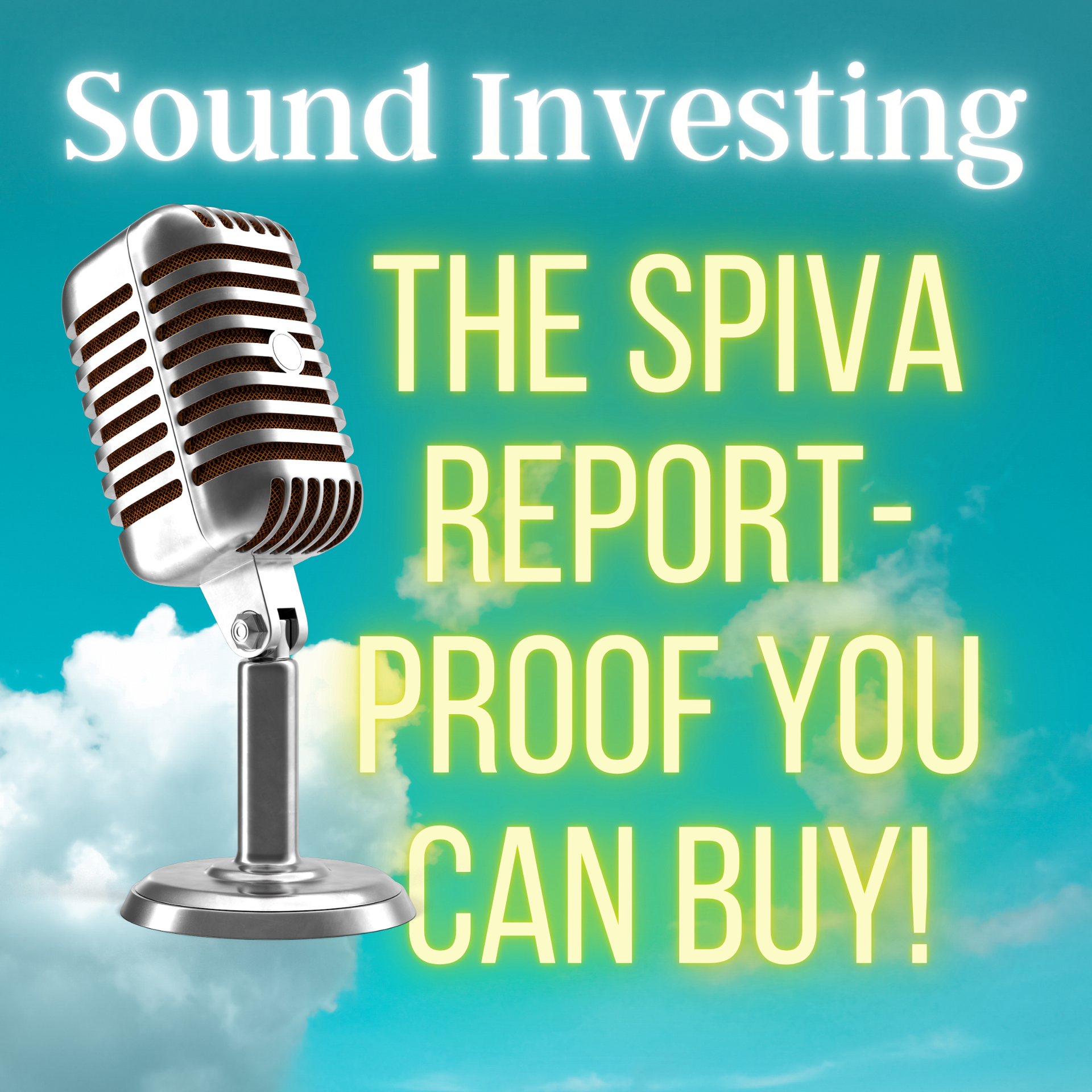
Today, we're diving into something super important for anyone interested in mutual funds: the SPIVA Report , it's a big deal, and we'll break down why. But before we get to that, a quick note about August 4th . Chris, Daryl, and I are getting together that day to figure out how we can do even more to help you, not just now, but for the rest of your life as we all get closer to retirement. This is a huge goal, and we'd love your input! What can we do to improve our educational materials? Please email me your ideas at paul@paulmerriman.com . We're thinking about everything, from AI's role to helping you build a portfolio that truly lasts a lifetime, send your thoughts my way! The SPIVA Report: Active vs. Passive Investing Alright, let's talk SPIVA . This report has been around since 2002, tracking the performance of active versus passive mutual funds . They analyze virtually every actively managed fund, comparing them to appropriate market indexes. They go to great lengths to ensure fair, "apples-to-apples" comparisons. A crucial aspect they address is survivorship bias . Many underperforming funds get merged or liquidated. If you were investing, these funds were part of your initial choices. SPIVA accounts for all funds, not just the ones that survived, giving a much more accurate picture. This is a key difference from other reports that only look at surviving funds, which can make active management look better than it is. They also track style consistency – ensuring funds stick to their stated investment approach, unlike some active managers who might "drift" in their investments. What the Data Reveals: The Long-Term Advantage While single years can show active managers doing okay, the real story unfolds over longer periods. Let's look at large-cap core funds (like those tracking the S&P 500): 1 year: ~76% underperform. 10 years: 96% underperform! 15 years: 97% underperform! 20 years: 93% underperform. This is a powerful reason why I advocate for index funds . They're built on a formula, not on human managers trying to guess market winners. Across almost all equity asset classes, over 90% of actively managed funds underperform over 20 years. Why? The first advantage for index funds is lower expenses . While active fund fees have come down, they're still a major factor. The biggest hidden risk, though, is manager's picks and timing . Active managers try to beat the market with individual stock selections, but the data shows it's incredibly risky. (By the way the report doesn’t address taxes on active funds and that can be another 1% drain annually.) SPIVA's quartile data highlights this: for small-cap value over five years, the top 25% of active funds started at 10% or more. But the bottom 25% earned significantly less than 7.8%. This means you're taking on volatility and the risk of vastly underperforming your chosen asset class. The report directly compares index returns to the average active fund in the same asset class. For small-cap value over 10 years, the index compounded at 8.2%, while the average active fund hit 7.3% – nearly a 1% difference! Over 20 years, for small-cap VALUE funds, the index returned 9% versus 7.4% for the average fund. These seemingly small differences translate into millions of dollars over a lifetime. Survivorship & Patience Another eye-opening stat: over 20 years, only 36% of all domestic funds are still in business. For large-cap growth, where the action has been recently, only 26% of funds from 20 years ago are still around. This suggests poor performance led to closures or mergers, hiding underperformance from investors. In the end, you, the investor, are the hardest worker. Your discipline to stay the course during tough times is paramount. The SPIVA report is a quality piece of research, factual and fair. While the future won't be identical to the past, it often "rhymes." The longer your investment horizon, the more likely choosing index funds (traditional or non-traditional) will lead to success, avoiding performance that may be more luck than skill. Patience is key, and we want you to have patience in owning funds with a very high probability of success. We are rooting for your investment success, not just for you, but for your children and grandchildren! So, good luck, and don't forget to send those suggestions for our August 4th meeting to paul@paulmerriman.com .

Watch video here. Join Paul Merriman, Chris Pedersen, and Daryl Bahls for a deep dive into questions facing today’s investors! In this episode, our team tackles a wide range of topics designed to help you make smarter financial decisions, whether you’re a seasoned DIY investor or just getting started. Main Topics Covered: 1. Midcap Funds – Are They Necessary? 2:24 We break down why midcap funds often get left out of recommended portfolios, the impact of fund overlap, and whether including them really adds value or just complexity. 2. Listener Allocation Questions 12:49 Hear real-life portfolio allocation questions from our listeners—including how to balance S&P 500, value, and midcap funds. The team discusses the pros and cons of various strategies and how to avoid unnecessary overlap. 3. The Risks of Small Cap Growth 19:10 Discover why small cap growth funds can be risky, the historical performance data, and why value funds may be a better long-term bet for most investors. 4. Hourly Advisors & DIY Investing 22:41 Thinking about ditching your advisor and going DIY? We discuss the benefits and challenges of working with hourly advisors, how to find one that supports your strategy, and the importance of sticking with a plan you understand. 5. Capital Gains & Taxes 27:45 Got questions about selling investments and minimizing taxes? While we don’t provide personal tax advice, our experts outline the key considerations and why consulting a tax professional is essential for big moves. 6. Financial Freedom Mindset 30:05 It’s not just about retirement—it’s about saving for freedom! Learn how reframing your financial goals can keep you motivated and focused for the long haul. 7. Avantis vs. DFA Funds 31:15 Curious about the differences between Avantis and DFA ETFs? Chris and Daryl compare these two fund families, explaining how their philosophies align, where they differ, and how to choose the best fit for your portfolio. 8. AVGE for Granddaughter? 38:32 Paul shares his personal approach to investing for his granddaughter, comparing AVUS, AVUV, and AVGE, and why teaching young investors about asset class behavior can be more valuable than just chasing returns. 9. Should You Avoid Growth Funds? 45:53 They explain why “growth” funds aren’t always what they seem, the pitfalls of chasing expensive stocks, and why a tilt toward value and small cap may offer better long-term results. 10. The Rule of 72 – Power of Compounding 52:47 Learn how to use the Rule of 72 to teach young investors (and yourself!) the massive impact of compound returns over time. It’s a simple math trick that can change your financial future. Daryl references this table- Sound Investing Portfolios 1970-2024

In this special episode, Paul Merriman reflects on six decades of financial evolution, sparked by his son's 60th birthday. He draws fascinating comparisons between life and investing in 1965 and today, offering invaluable insights for every investor. What You'll Learn: A Look Back at 1965: Paul revisits societal norms, income levels, and the investing landscape of 60 years ago, including startling facts about mutual fund loads and stock commissions. The Evolution of Investing: Understand the monumental shift from individual stock picking to the dominance of mutual funds and the revolutionary impact of index funds since their inception. Market Returns & Bear Markets: Gain perspective on historical S&P 500 returns, including adjustments for inflation, and a review of major bear markets over the past decades. The Power of Low Costs: Discover how investment costs, from loads to commissions, have drastically reduced, making it easier and more affordable for today's investors. Modern Investment Tools: Paul highlights the advent of crucial financial tools like IRAs, 401(k)s, and target-date funds that weren't available in 1965, empowering today's investors. Academic-Driven Investing: Explore the rise of academic influence in investing, with a focus on firms like Vanguard, DFA, and Avantis, and why their approach offers a trustworthy path to your financial future. The Role of AI in Your Financial Journey: Paul shares his perspective on how Artificial Intelligence can empower investors to make informed decisions and find reliable financial guidance. Top Financial Education Resources: Learn about the highly recommended (and free!) "Rebel Finance School" by Alan and Katie Donoghan for new investors, and explore how to access financial literacy programs like iGrad. The Importance of Financial Literacy: Paul emphasizes that financial literacy is often overlooked in traditional education and is essential for building a robust portfolio that will support you for a lifetime. DIY Investing Philosophy: Paul reaffirms his core mission as a teacher, empowering listeners to "do it yourself" and build their financial future with confidence. Truth Tellers: Paul asked our listeners for recommendations for Truth Tellers as well as providing the list of our Truth Tellers in the show notes. Our Truth Tellers William J. Bernstein Ben Carlson, CFA Jonathan Clements, Financial Writer/Author Larry Swedroe, Author, Speaker, Chief Research Officer Dr. James Dahle, MD and the founder of The White Coat Investor Morningstar – Christine Benz and John Rekenthaler, Financial Writers Stan The Annuity Man, Annuity Expert George Sisti, Certified Financial Planner® Rob Berger, podcaster, writer and author Tim Ranzetta, ngpf.org Two Cents Tom Cock and Don McDonald Vestory Ben Felix Don't miss this insightful episode filled with historical context, practical advice, and forward-looking strategies for your wealth-building journey.

Today I’ve got a lot to share: my recent trip to Western, new educational tables from Daryl Bahls, a must-read article by Ben Carlson, a fantastic free resource called Rebel Finance, and some takeaways from the latest Bogleheads meeting. 00:48 Trip to Western: Teaching, Presenting, and Giving Back It’s been a wonderful week. I spent two full days at Western, presenting to seniors about to graduate, to faculty and staff, and to a personal finance class. I also had a fantastic hour with the Financial Management Association Club. These students were fired up about their financial futures, and it was energizing to see their interest. A big part of my visit was to help everyone—students, faculty, and staff—see how they can get involved in building financial literacy on campus. And to make things a little more exciting, I offered a $1,000 drawing for students. Whoever won could take the money with no strings attached, but I also offered to personally help them set up a Roth IRA and invest it wisely. 03:49 Daryl Bahls’ New Tables: The Power of Compound Growth A huge thank you to Daryl Bahls, who put together some new tables for my presentations. These tables are more than just numbers—they’re a window into the power of long-term investing. $1000 in Roth IRA on 22nd birthday We looked at what happens if you invest $1,000 into a Roth IRA at age 22 and never add another dime. With assumed returns of 8%, 10%, and 12%, the results are astonishing. That $1,000 can grow to $30,000, $69,000, or even $156,000 over 45 years. But the story doesn’t stop there—after you start taking 5% withdrawals in retirement, and even after you pass it on to your heirs, the money keeps working, potentially multiplying your original investment by hundreds or even thousands of times. $100/mo for 45 years in Roth IRA starting on 22nd birthday Then we explored what happens if you save $100 a month for 45 years. The numbers explode: at 8%, you end up with nearly half a million dollars; at 10%, over $900,000; at 12%, $1.7 million. And after decades of withdrawals and inheritance, the cumulative benefit can reach into the tens of millions. One of the key lessons here is that time and consistency are your best friends. Even small amounts, given enough years and the magic of compounding, can become life-changing sums. 16:29 Lessons on Sequence of Returns A quick but crucial side note: When you invest a lump sum and let it grow, the sequence of good and bad years doesn’t matter—over the long haul, but the sequence of returns is very important. But when you’re adding money regularly (dollar-cost averaging), the sequence does matter. Buying more shares during downturns can actually boost your long-term results, especially in volatile asset classes like small-cap value stocks. 29:14 The Importance of Financial Education I know a lot of people, especially young folks, feel like they can’t get started with investing—maybe they think they don’t have enough money, or it’s too complicated, or they’re afraid of losing it all. These are real concerns, but they can be overcome. Sometimes you just need the right teacher, or even a preacher, to help you take that first step and keep moving forward. One of my biggest takeaways from this week is how many young people leave school without basic money skills. That’s why I’m so passionate about the Merriman Financial Literacy Program at Western and resources like iGrad, which are now available to all graduates at no cost. 32:00 Rebel Finance: Free, Practical Education Speaking of great teachers, I want to give a big shoutout to Alan and Katie of Rebel Finance. Thanks to an email from ChooseFI, I discovered their f ree 10-week course . I’ve watched their introduction and first session, and I’m impressed by how they keep things simple, interactive, and fun—even with thousands of participants tuning in live. They cover everything from budgeting to investing to negotiating a raise, and they archive all their content on YouTube . If you or someone you know needs a practical, supportive entry point to personal finance, I highly recommend checking them out. Links are in the notes. 38:48 Ben Carlson’s Article: “On the Inevitability of Bear Markets” I also want to spotlight an article by Ben Carlson, “On the Inevitability of Bear Markets.” Carlson lays out the odds: 32% chance of a bear market in any given year, 77% over five years, 95% over ten years. But here’s the encouraging part: The longer you stay invested, the higher your odds of seeing positive returns—100% for 20-year periods in the S&P 500. Bear markets are a fact of life, but so is long-term growth if you stay the course. 44:00 Bogleheads Meeting: Community and Sharing This week, I also attended a local Bogleheads chapter dinner—a gathering of people who believe in index investing and lifelong learning. We swapped ideas about financial planning tools, shared stories about helping our parents and kids, and just enjoyed a sense of community. I met a bright high school junior who’s already reading “We’re Talking Millions” and learning about investing. The future is in good hands! And don’t forget: I’ll be speaking at the Bogleheads Conference in San Antonio this October. Alan and Katie from Rebel Finance will be there too as guests, not speakers! Check the show notes for more info. 47:09 AI in Financial Education A quick note on the future: Artificial intelligence is changing how we learn and teach about investing. I’m using AI more and more to organize my thoughts and create better educational content. If you’re experimenting with AI in your own financial journey, I’d love to hear about your experiences. We might even do a white paper or a special episode on AI and investing soon. 48:00 Final Thoughts and Gratitude Let me close with this: Start early, even if it’s just a small amount. Stay consistent, and let time and compounding do the heavy lifting. Use the resources and communities around you—whether it’s Rebel Finance, Bogleheads, or your own circle. Don’t let fear or complexity hold you back. The math is powerful, but the mindset is even more important. And if you find value in what we’re doing, please help us spread the word—like, subscribe, share, or leave a review. Every bit helps us reach more people and make a bigger impact. Thank you for your support, your questions, and your commitment to learning. Good fortune, and happy investing! Watch Paul's video What Every Young Investor Should Know
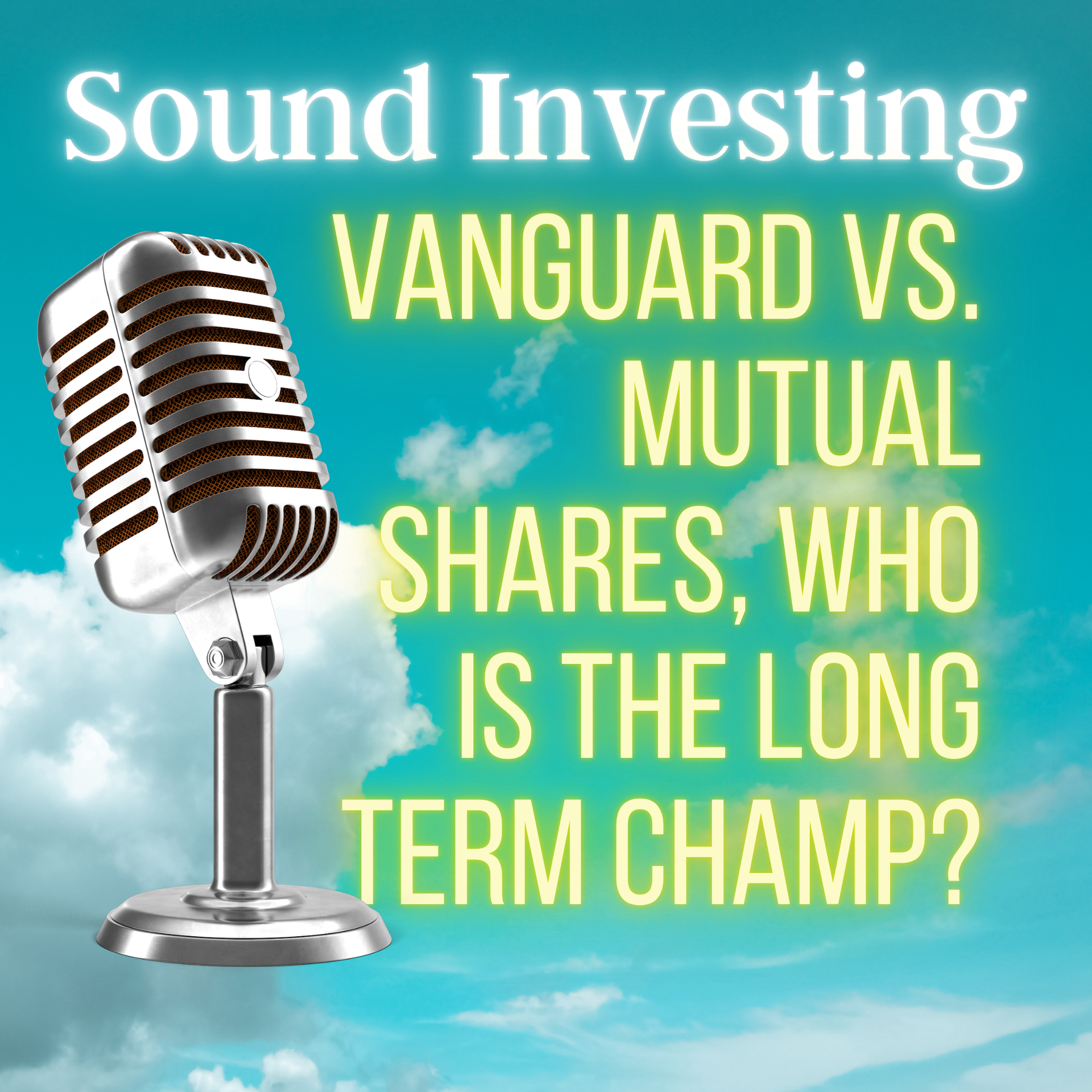
In this episode, Paul Merriman details his upcoming presentations at Western Washington University, where he will be connecting with students, professors, and staff about the critical importance of personal finance education. Paul also gives practical investing advice, including a hands-on guide to using Morningstar’s chart and comparison tools to analyze mutual funds and ETFs. Special Feature: Free Online Financial Literacy Course Paul spotlights a fantastic, free multi-week financial literacy course led by Alan and Katie Donoghan—nationally recognized educators from the UK. This course is perfect for first-time investors of any age, as well as anyone looking to build a solid foundation in personal finance. Course Dates: The next session starts 2 June 2025 at 8pm UK time . Sessions run weekly throughout the summer. What’s included: Engaging lessons on investing basics, budgeting, mortgages, and money management—delivered in a fun, approachable style. Format: Live online sessions (with replays on YouTube), each followed by an expert Q&A. Who’s it for: Anyone—from college students to adults in their 40s or 50s—looking to take control of their financial future. Previous students give rave reviews: Over 15,000 people have enrolled, with glowing testimonials from participants who now feel confident and empowered about their finances. How to join: Register here for free and find the intro video and full schedule. All sessions are accessible worldwide. Morningstar Tools & Tables Referenced: Paul walks listeners through using Morningstar’s chart and comparison features, specifically referencing the following funds and time periods: VFINX (Vanguard 500 Index Fund): Time period: From August 31, 1976 to May 23, 2025 Used to illustrate long-term S&P 500 performance TESIX (Franklin Mutual Shares Fund): Time period: From August 31, 1976 to May 23, 2025 Compared side-by-side with VFINX to show how a value fund performed versus the S&P 500 over nearly 50 years DFLVX (DFA US Large Cap Value Fund): Time period: From 1993 to 2025 Compared with TESIX and VVIAX for large cap value performance VVIAX (Vanguard Value Index Fund): Time period: From 1993 to 2025 Used for comparison with DFLVX and TESIX DFSVX (DFA US Small Cap Value Fund): Time period: From 2000 to 2025 Compared with TESIX for small cap vs large cap value performance AVUV (Avantis US Small Cap Value ETF): Time period: From 2021 to present Compared with DFLVX and VVIAX for recent small cap value performance How Paul Uses Morningstar: On Morningstar, Paul suggests: Navigating to the “Chart” tab for each fund Selecting “Max” to see the longest available performance history Entering ticker symbols (like VFINX, TESIX, DFLVX, VVIAX, DFSVX, AVUV) in the “Compare” box to view multiple funds together- make sure any funds being compared to the primary fund have a track record from a date at least as long as the primary fund Using Morningstar’s Chart and Compare tools: Compare VFINX vs TESIX (1976–2025) Compare DFLVX , VVIAX , and TESIX (1993–2025) Compare DFSVX vs TESIX (2000–2025) Compare AVUV vs DFLVX and VVIAX (2021–present) PDF showing the above comparisons

Prior to discussing his topic of the day, Paul shares his thoughts on a recent podcast featuring Truth Tellers Tom Cock and Don McDonald, joined by Weston Wellington from Dimensional Fund Advisors. Weston weighs in on some of the most critical issues facing investors right now. Here are the topics on the podcast with Tom Cock and Don McDonald- 0:53 Weston Wellington on volatility and market uncertainty 2:47 Why volatility is the “price we pay to play” 3:32 The media’s role in investor anxiety 4:57 Should investors act on daily financial advice? 6:15 Portfolio changes should reflect personal changes, not headlines 7:24 Spam vs. Motorola: A lesson in stock picking 9:44 Dimensional’s stance on individual stock ownership 10:02 Diversification as “the closest thing to a free lunch” 11:07 Are alternative investments the new magic bullet? 12:43 Mutual funds vs. ETFs—what works best and when 15:27 Industry evolution: from 8% loads to indexing dominance 18:29 Where Dimensional fits in the modern fund landscape 21:01 AI vs. “aggregated intelligence” in managing portfolios 24:04 How regular people can find real financial advice 25:34 The key to success: Temperament, not timing 26:44 Weston’s side gig as a roving birthday singer 27:58 Why Weston hasn’t been invited lately (and he's lonely) Next, Paul highlights a recent article by another Truth Teller, Ben Carlson. In “60/40 Portfolio Corrections, Bear Markets and Recoveries,” Ben breaks down the differences in returns during bear markets and the bounce-back that follows. Inspired by this, Paul explores a question that doesn’t get much attention: What’s the impact on a portfolio when you apply a 4% fixed withdrawal rate to the nine Sound Investing equity portfolios, each with a 60/40 equity-to-fixed income split? The results may surprise you! Paul notes there’s more to come on this topic, as these findings could have a real impact on how investors choose their retirement portfolios. As promised, here are the links to the Sound Investing Portfolios: 50% U.S. / 50% International 70% U.S. / 30% International

"Buy and hold investors don’t just win on average returns— they win by avoiding the behavioral landmines that sabotage long-term success.” Paul Merriman In this podcast Paul addresses one of the most important investment decisions a do it yourself investor will make. Paul opens the discussion with comments from a Forbes article from 2008 that discusses Warren Buffett’s market timing decision he made to get totally out of the market in 1969 and back aboard in 1974. The podcast (with the help of Chatgpt, includes a list of 10 common reasons market timing doesn’t work for amateur investors. 1. Missing the best days 2. Emotional decision-making 3. Perfect timing is impossible 4. Higher costs and taxes 5. Volatility is high during recovery 6. Recency Bias 7. Focus on noise, not timing signals 8. Overconfidence 9. Loss of Compound Growth 10. Data shows long-term investing wins Paul challenges AI that there are many emotional disadvantages with timing. The most important performance and non performance hurdles: 1. Decision-making: Timing requires lots of work and buy and hold almost none. 2. Mistakes: Market timing suffers lots of mistakes and buy & hold rarely wrong in the long term. 3. Emotional Toll: Timing has lots of emotional challenges and buy & hold is more peaceful. 4. Behavioral Risks: Timing has lots of behavioral risks and buy & hold is simple. 5. Time Commitment: Timing takes time and action and buy & hold is rarely touched. 6. Expenses: Costs and taxes are both lower with buy & hold. 7. Timers must be more resilient with many decisions being wrong. 8. Financial Results: A few timers may perform well but all buy & holders are likely to have “won”.
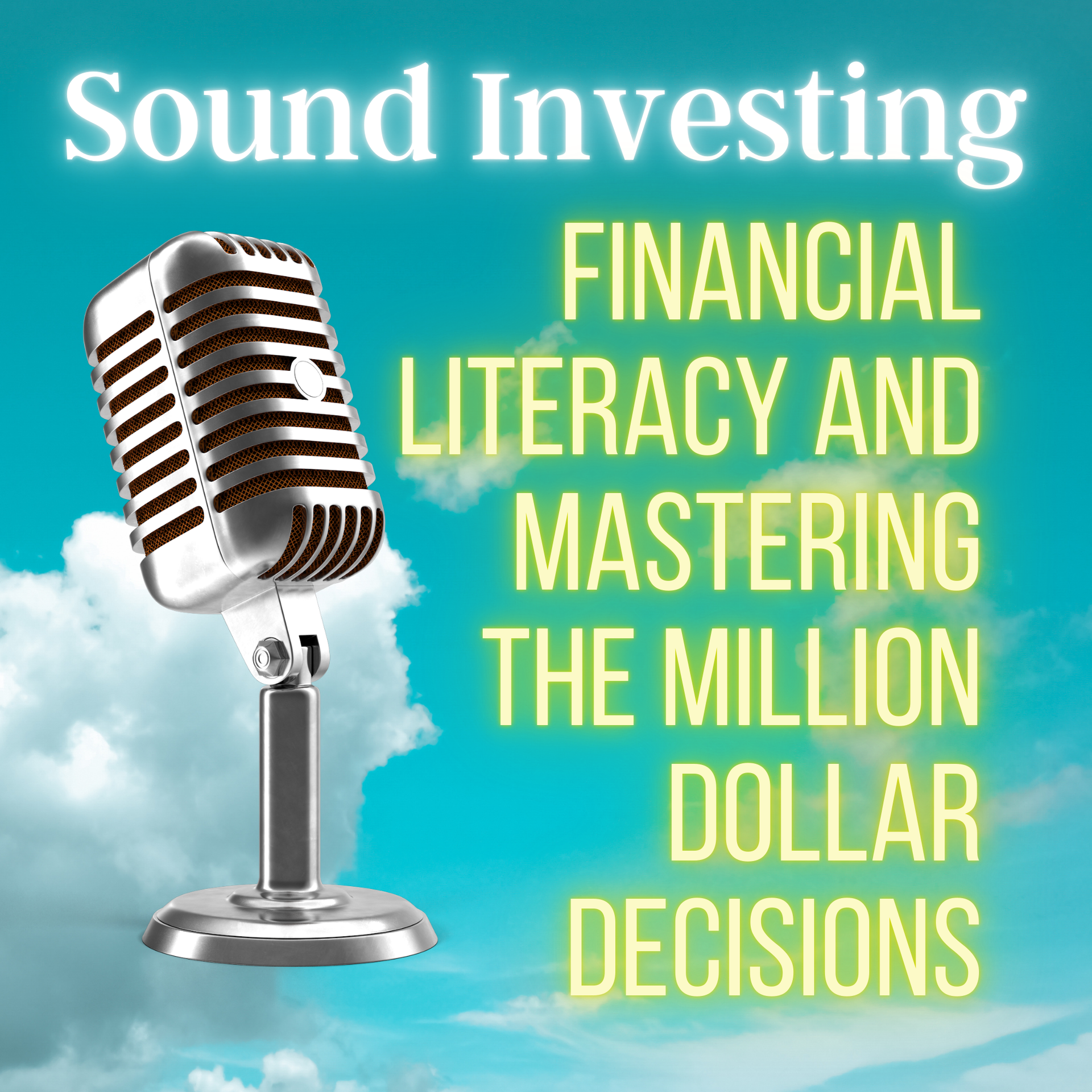
Watch Video here April is Financial Literacy Month, and to help us celebrate we brought in a returning guest, Paul Merriman. Paul has been on the show before to discuss investment portfolios, but today he talks with us about some extraordinary strides he's making as a financial literacy advocate through his nonprofit, The Merriman Financial Education Foundation. We also share some of our favorite financial literacy resources. RESOURCES MENTIONED ON THE SHOW 🌐 Visit Catching Up to FI website https://catchinguptofi.comPaul's Website https://www.paulmerriman.comMerriman Financial Literacy Program at Western Washington University https://financialliteracy.wwu.eduIGrad https://www.igrad.com/Next Gen Personal Finance https://www.ngpf.orgWhite Coat Investor https://www.whitecoatinvestor.comThe John C. Bogle Center for Financial Literacyhttps://boglecenter.net TIMESTAMPS / CHAPTERS 00:00 📣 Introduction and Financial Literacy Impact 01:09 👋 Welcome and Guest Introduction 01:35 🤝 Paul Merriman's Nonprofit and Financial Literacy Story 02:33 💡 The Importance of Financial Literacy 06:59 🏫 Nonprofit Initiatives and University Programs 16:15 🏋️♀️ Bootcamp and Investment Decisions 18:07 🌐 Other Financial Literacy Organizations 22:09 🏛 State-Level Financial Literacy Education 25:55 ✨ Final Thoughts and Encouragement 31:27 🙏 Conclusion and Farewell
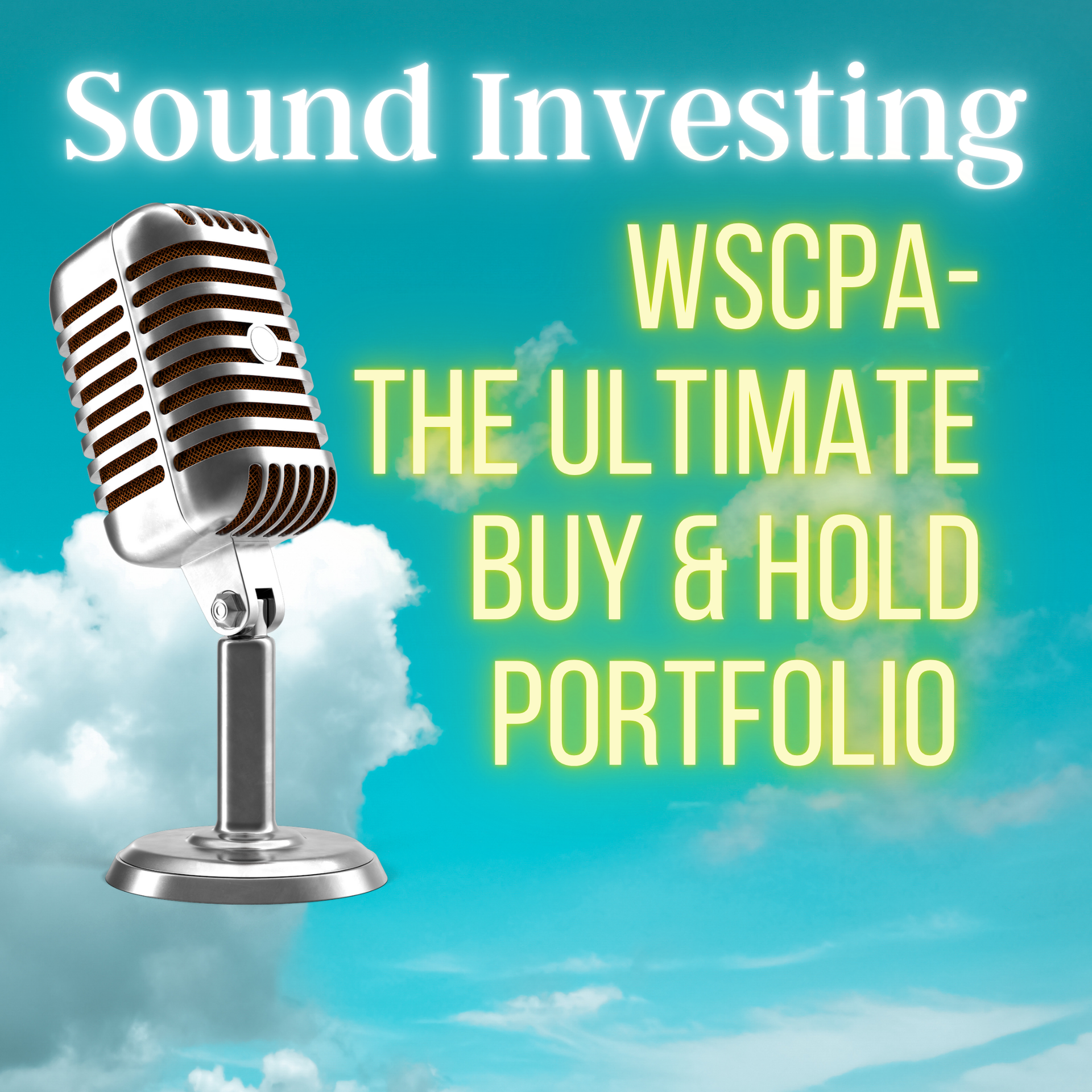
Watch video here This updated discussion of the Ultimate Buy and Hold Portfolio highlights the advantages of equity asset allocation and worldwide diversification. The presentation was presented to members of the Washington State Society of CPAs. At the end of the presentation Paul adds his list of 15 million dollar decisions that all investors will make in their lifetime. Here is feedback from one of the CPAs that attended this presentation. "I watched the video and found it very valuable. I am sending it to my adult children.” I hope you do that as well.
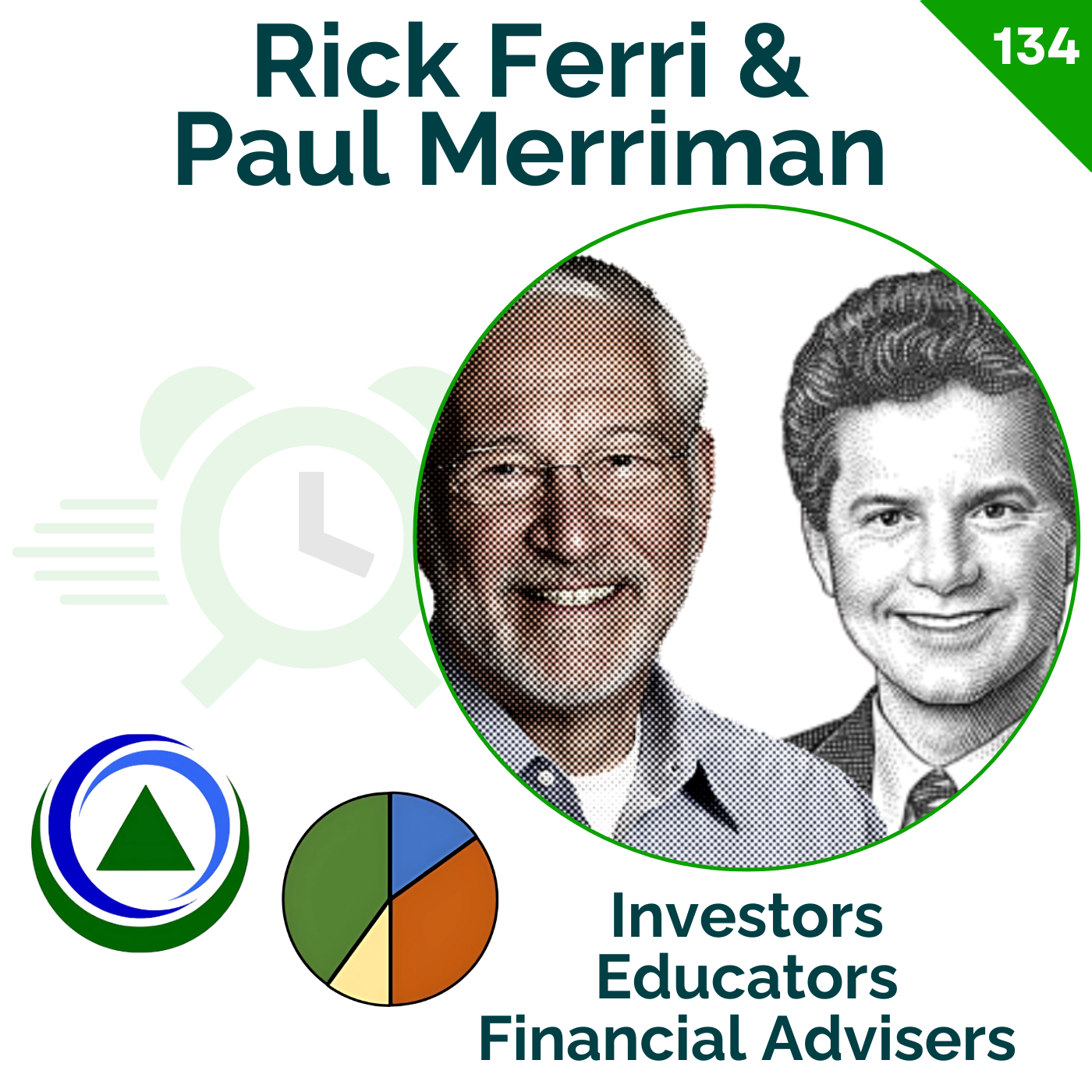
Watch the video here Join me on Catching Up to Fi l with Rick Ferri to discuss key investing topics like asset allocation and the pros and cons of small-cap value vs. total market funds. TIMESTAMPS / CHAPTERS 00:00 ⛓️ Understanding Bonds and Young Investors 02:31 🌟 Introduction to Financial Literacy Titans 03:12 🎓 Paul Merriman's Financial Education Foundation 04:18 🧠 Rick Ferri and the Bogle Center for Financial Literacy 12:09 ⚖️ The Importance of Asset Allocation 23:11 🌍 Debating International vs. US Stocks 35:12 🗓️ Target Date Retirement Funds: Pros and Cons 45:55 📈 Exploring Small Cap Value Investing 49:34 🧩 Understanding Non-Traditional Index Funds 50:28 🔍 Small Cap Value Performance Analysis 52:56 👨👩👧👦 Generational Wealth and Portfolio Management 53:54 🧬 Diverse Value Factors in Investing 55:55 🚧 Challenges of Small Cap Value Investing 57:33 🧭 The Philosophy of Long-Term Investment Strategies 01:01:11 🧪 Debating the Evidence-Based Investing Approach 01:12:46 🛡️ The Importance of Staying the Course 01:22:05 🎤 Final Thoughts and Recommendations

Watch video here In the left corner, we have Paul Merriman, the seasoned finance veteran weighing in at 183 pounds. In the right corner, Dr. Karsten Jeske, the scrappy newcomer at 208 pounds. The bell rings, and the small cap value debate begins. This episode features a financial boxing match between two investment heavyweights with dramatically different perspectives. Paul Merriman champions diversification through the efficient frontier, which means adding small cap value to your portfolio. Dr. Karsten Jeska has “thrown cold water” on this approach, favoring simpler strategies like “VTSAX and chill.” The stakes are high — we’re talking potentially millions of dollars in your retirement account over decades. Merriman argues that history shows clear evidence for small cap value’s premium. From 2000 to 2009, small cap value outperformed the S&P 500 in all but one year, compounding at 10 percent while the S&P 500 returned negative 1 percent. He believes this pattern will continue, creating a powerful diversification effect when combined with broader market indexes. Jeske counters that small cap value’s outperformance is mostly “front-loaded” in history, happening before anyone knew about it. Since 2006, small cap value has underperformed. He argues that once an advantage becomes widely known, it disappears in an efficient market. Adding small cap value might even be “di-worsification” — increasing complexity without improving returns. The debate expands beyond small cap value to touch on: Active vs. passive investing strategies Market timing vs. buy-and-hold approaches Simplicity vs. complexity in portfolio construction The role of faith vs. evidence in investment decisions While both experts disagree about small cap value’s future, they agree on fundamentals: invest early, stay invested for the long term, and understand that no one can predict markets with certainty. What starts as a technical debate evolves into a philosophical discussion about evidence, probability, and the limits of our knowledge — all with millions of retirement dollars hanging in the balance. Timestamps: Note: Timestamps will vary on individual listening devices based on dynamic advertising run times. The provided timestamps are approximate and may be several minutes off due to changing ad lengths. (0:00) Debate intro: small cap value vs index funds (4:01) Merriman: small cap value offers premium returns (9:40) Jeske: small cap value underperformed since 2006 (18:20) Historical performance data significance (25:15) Stakes: difference of millions over time (33:08) Diversification vs added volatility debate (41:45) Risk-adjusted returns comparison (49:08) Questioning true diversification benefits (57:40) Value traps and actively managed funds (1:05:08) Technology stocks vs value investments (1:13:45) Data selection bias in studies (1:19:40) Faith vs science in investment decisions (1:29:20) Personal risk tolerance considerations (1:36:08) Closing arguments on investment strategies (1:42:08) Paula declares the debate a draw

If a retired investor has the ability to use a flexible distribution strategy it will likely produce one of the best financial outcomes in retirement. Before discussing flexible distributions Paul lists the reasons he believes that 99% of successful long term depends on defensive steps. After listing 18 defensive decisions he explains why flexible distributions are better than fixed distributions for those who have over said. The presentation includes 16 distribution tables that can be found in this pdf for the presentation . In each case Paul compares the difference in returns and risk between the fixed and flexible distribution strategies. The discussion compares returns and total distributions for two of the 9 sound investing portfolios: one using the S&P 500 and the other the U.S. 2 Fund Portfolio (50/50 S&P 500Small Cap Value). Other links noted in the presentation: Sound Investing Portfolios

The move from the accumulation to distribution period of an investors lifetime includes some very important decisions. What asset allocation between equities and fixed income? What combination of equity asset classes in the equity portion, as well as fixed income asset classes? What amount of distribution will be made annually? Will the payments be monthly, quarterly or annually? Will payments be adjusted for inflation and how often? Will the distributions be based on a fixed distribution with regular adjustments for inflation (the topic in this presentation) or on a flexible basis (the topic of the next segment)? In this podcast Paul uses 15 slides to address the questions above. It is recommended the viewer print out the PP presentation to make it easier to follow the numbers. Many may find it is easier to follow the information on Paul’s video on the same topic. If you have questions about the presentation please leave comment or question in the comment section of the video or email paul@paulmerriman.com . For those sending an email please let us know the topic of the Boot Camp presentation.

Watch video here Young and first time investors have to address a number of monumental decisions. How much money to save for the future How much they should invest in equities and bonds How much of the equities should be in large, small, value, growth, U.S. and international asset classes How much to increase the investment each year This podcast/video helps the investor address those decisions. For those listening to the podcast here is a link to the pdf of all of the tables referenced in the presentation. He only focuses on a handful of tables but here is a link for those who want to review the entire set of tables. Paul discusses the accumulation process from the viewpoint of an investor as well as a small business owner. If you have questions please send them to paul@paulmerriman.com or leave them in the comment section below.

Here is the video. This is the 4th in a series of 9 Boot Camp videos/podcasts. The previous three segments covered : Stocks vs. Bonds The Ultimate Buy and Hold Portfolio Sound Investing Portfolios. In this presentation Paul focuses on the differences between the risks and returns of different percentages stocks and bonds. He also discusses one table that mixes different percentages of the S&P 500 and small cap value.Here are a couple of videos that focus on small cap value. $13.83 Million? Yes Please! Paul Merriman’s Small Cap Value Strategy The one asset class you must own

Watch Video here Chris Pedersen updates his recommendations and describes his selection process in an interactive presentation with Paul and Daryl along for the ride. This "Best In Class ETFs Recommendations" presentation is the 9th in the Boot Camp Series. (We have not completed some of the earlier presentations due to the high interest in Chris' Best In Class Recommendations). The focus of each the Boot Camp presentation is to help investors make the best of what we consider to be the biggest long term decisions they will make. Of course we cannot know the ETFs that will produce the highest returns but we can measure the likely impact of the factors that Chris discusses during his presentation. On behalf of all of the people who find this work helpful, as well as Daryl Bahls and myself, I want to thank Chris Pedersen for all he has done to help us understand the potential long term advantage of his analysis. It is our hope that his work will give investors the confidence and commitment to “stay the course" in the normal ups and downs of the market. 00:00:00 - Intro 00:07:15 - Changes 00:12:31 - Factor Basics 00:18:00 - Selection Criteria 00:20:21 -- Quantifying Differences 00:24:32 -- Comparing in an Asset Class 00:31:10 -- More than just numbers 00:32:12 -- BIC ETFs on Website 00:33:05 -- US Large Cap Blend 00:34:33 -- US Large Cap Value 00:37:40 -- US Small Cap Blend 00:42:30 -- Int'l Large Cap Value 00:43:30 -- Int'l Small Cap Blend 00:44:15 -- Em. Mkts Small Cap Blend 00:44:50 -- Portfolio Configurator 00:46:25 -- Roboadvisor ETFs 00:51:06 -- Versus Russell 2,000? 00:54:00 -- Avantis & DFA Advantage 01:03:36 -- Analysis Timeframes 01:04:44 -- Closing Remarks Links: Best-in-Class ETF Recommendations Page Portfolio Configurator Sound Investing Portfolios Bootcamp Page

The 2024 numbers are finally in and we have produced the #1 investment decision in the Bootcamp series. There is no question that the biggest lifetime decision an investor makes is the choice between the safety of bonds and the potential long term growth of stocks. Here is a link to the pdf of the set of slides Paul uses in the presentation. The presentation includes the updated 1, 15 and 40 year returns tables along with the quilt charts for the 1928 to 2024 period . Our thanks to Daryl Bahls who has put together most of the tables in the Bootcamp series. If you have questions please send them to paul@paulmerriman.com . Please put Bootcamp #1 in the subject line. Watch video here.

The purpose of this podcast/video is to help investors understand the likely risk and return parameters of small cap value, S&P 500, 2 Fund Portfolio (50% each SCV/S&P) and 4 Fund Portfolio (25% each SCV/S&P/SCB/LCV). In each case the best, worst, and average 1, 2, 3, 5, 10. 15, 20, 25, 30, 35, 40 year returns are listed. The following tables are discussed: S&P 500 Historical Risk and Return US SCV Index Portfolio Historical Risk and Return US 2 Fund Index Portfolio Historical Risk and Return US 4 Fund Index Portfolio Historical Risk and Return Also the risk and return page from the Sound Portfolios is referenced.

This is the second presentation in the Boot Camp Series. Click for video . The first presentation (Stocks Vs. Bonds) will be available in the next two weeks. This presentation makes the case for diversifying a portfolio using multiple equity asset classes. Paul uses 4 set of tables to make his case: A1a: Ultimate Buy & Hold Equity Portfolio (50% US/50% Int'l) A2a: Alternative Equity Portfolio Tables (50% US/50% Int'l) A1b: Ultimate Buy & Hold Equity Portfolio (70% US/30% Int'l) A-2b: Alternative Equity Portfolio Tables (70% US/30% Int'l) Paul also mentions the recent video/podcast that addresses the Sound Investing Portfolios. https://www.youtube.com/watch?v=XGv0ZdZ8adk https://www.paulmerriman.com/2025-bootcamp-3-sound-investing-portfolios

In this Podcast, Paul, Chris, and Daryl describe the Sound Investing Portfolios and their background, rationale, construction, and performance. Click for video link 00:00 - Intro 02:00 - DFA Background 05:47 - Portfolio Rationale 11:45 - Allocations 14:11 - Backtesting & Comparisons 19:32 - Rewards of Diversification 28:42 - Differing Good Times 32:40 - 70/30 US/Int'l Portfolios 35:05 - Which Funds? 39:08 - Close During the Podcast the following tables were referenced: ✅ Table H1a - Sound Investing Portfolios: Asset Allocations (50% U.S. / 50% Int’l) ✅ Table H2a - Sound Investing Portfolios: Comparative Data (50% U.S. / 50% Int’l) ✅ Table H3a - Sound Investing Portfolios: Annual Returns (50% U.S. / 50% Int’l) ✅ Table H4a - Sound Investing Portfolios: Quilt Chart (50% US / 50% Int'l) ✅ Table H1b - Sound Investing Portfolios: Asset Allocations (70% U.S. / 30% Int’l) ✅ Table H2b - Sound Investing Portfolios: Comparative Data (70% U.S. / 30% Int’l) ✅ Table H3b - Sound Investing Portfolios: Annual Returns (70% U.S. / 30% Int’l) ✅ Table H4b - Sound Investing Portfolios: Quilt Chart (70% US / 30% Int'l)

In this insightful conversation, renowned financial expert Paul Merriman shares his wealth of knowledge and experience in investing. He discusses his journey from stockbroker to founding his own investment advisory firm, and eventually establishing the Merriman Financial Education Foundation. Paul delves into various topics, including: ✅ The importance of data-driven investing and understanding the math behind it ✅ His meeting with John Bogle and their differing philosophies on investing ✅ The case for small cap value investing and its historical performance ✅ The challenges of market timing and the benefits of portfolio diversification ✅ The emergence of ETFs and trend following strategies PaulMerriman.com Tables, Graphs and Charts Boot C a mp S&P 500 vs Small Cap Value Quilt Charts Equity Index Returns Free Copy- We’re Talking Millions Free Copy- 2 Funds for Life Best in Class ETF Update 2024 ETFAtlas.com – A new portal offering a comprehensive catalog of ETFs from the United 00:00:00 Introduction and ETFAtlas.com 00:03:30 Paul's early career and transition to investing 00:08:50 Founding an investment advisory company 00:13:05 Transition to financial education 00:19:20 The importance of data-driven investing 00:23:05 Meeting with John Bogle and differing philosophies 00:29:20 The importance of having more than enough for retirement 00:32:50 Teaching young people about investing as a business 00:36:20 The magic of compound interest in investing 00:45:50 The case for small cap value investing 00:54:40 Trend following strategies and ETFs
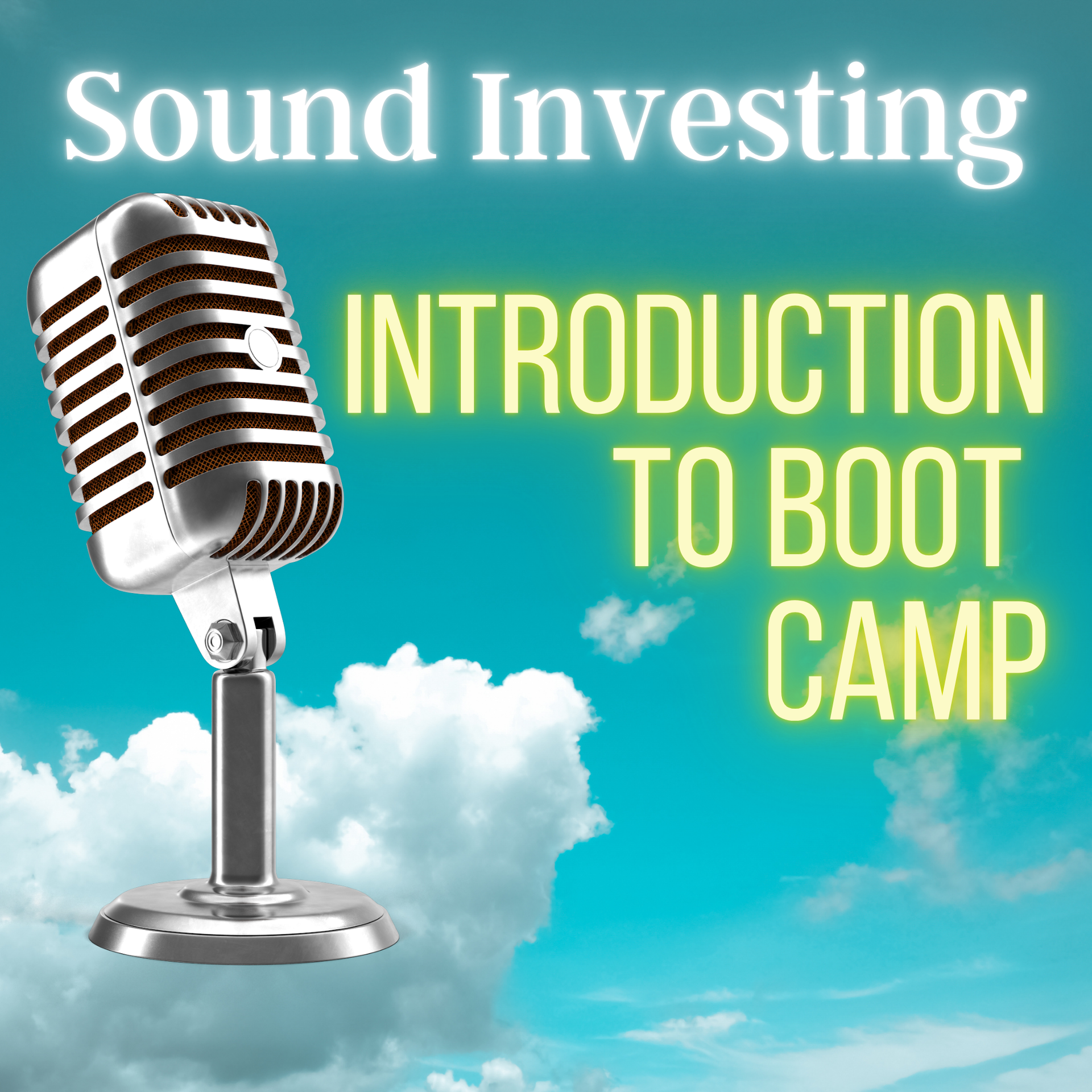
The podcast starts with a brief history of the growth of the Merriman Financial Literacy Foundation. From it’s small beginning in December 2012, it has produced over 1000 videos, articles and podcasts, published 6 books, spoken at many national conferences, underwritten a university class on investing for non finance majors at Western Washington University, produced portfolios for do it yourself investors, produced recommended mutual funds and ETFs to build the portfolios. Most recently there is a new effort to give every Western student a meaningful exposure to personal finance. This is being done under the Merriman Financial Literacy Program at Western. Two years ago we introduced the Merriman Boot Camp. The purpose of the project is to help investors make the best financial decisions. In the podcast Paul discusses 14 of those decisions and how we are enlarging our educational efforts. He also notes that the Boot Camp pages will also contain a new Q&A section on each topic as well as additional information from our list of Truth Tellers.

In this first Q&A podcast of 2025, Paul, Daryl, and Chris discuss several listener questions and expand on Paul's rebuttal of Big ERN's recent criticisms of diversifying with small-cap value. Watch video here. 0:00 – Introduction 0:29 – Responding to Big ERN's critique 2:11 – Small-cap value lumpsum vs. dollar-cost averaging 6:38 – Daryl's take on SCV's premium persistence 8:46 – Chris' take on SCV's premium persistence 15:50 – Paul highlights the random timing of SCV vs. S&P500 returns 19:50 -- Are there good alternatives to Vanguard's Wellesley fund? 26:18 -- Does 2 Funds for Life mean no SCV in retirement? 29:35 -- Why not let Buffet manage our money in BRK.B? 33:52 -- What portfolio to get a 3.6% safe withdrawal rate in retirement? 38:53 -- Which accounts do we tap for our annual spending needs? 49:39 -- Why doesn't the Portfolio Configurator include REITs and emerging markets? 54:52 -- When will the Best-in-Class ETF recommendations be updated? These tables were referenced- Table G-1b - Fine Tuning Table: S&P 500 vs US SCV Equity Portfolio - Out-Performance Tell-Tale_Charts 2 Funds for Life PDF 2 Funds for Life on Amazon
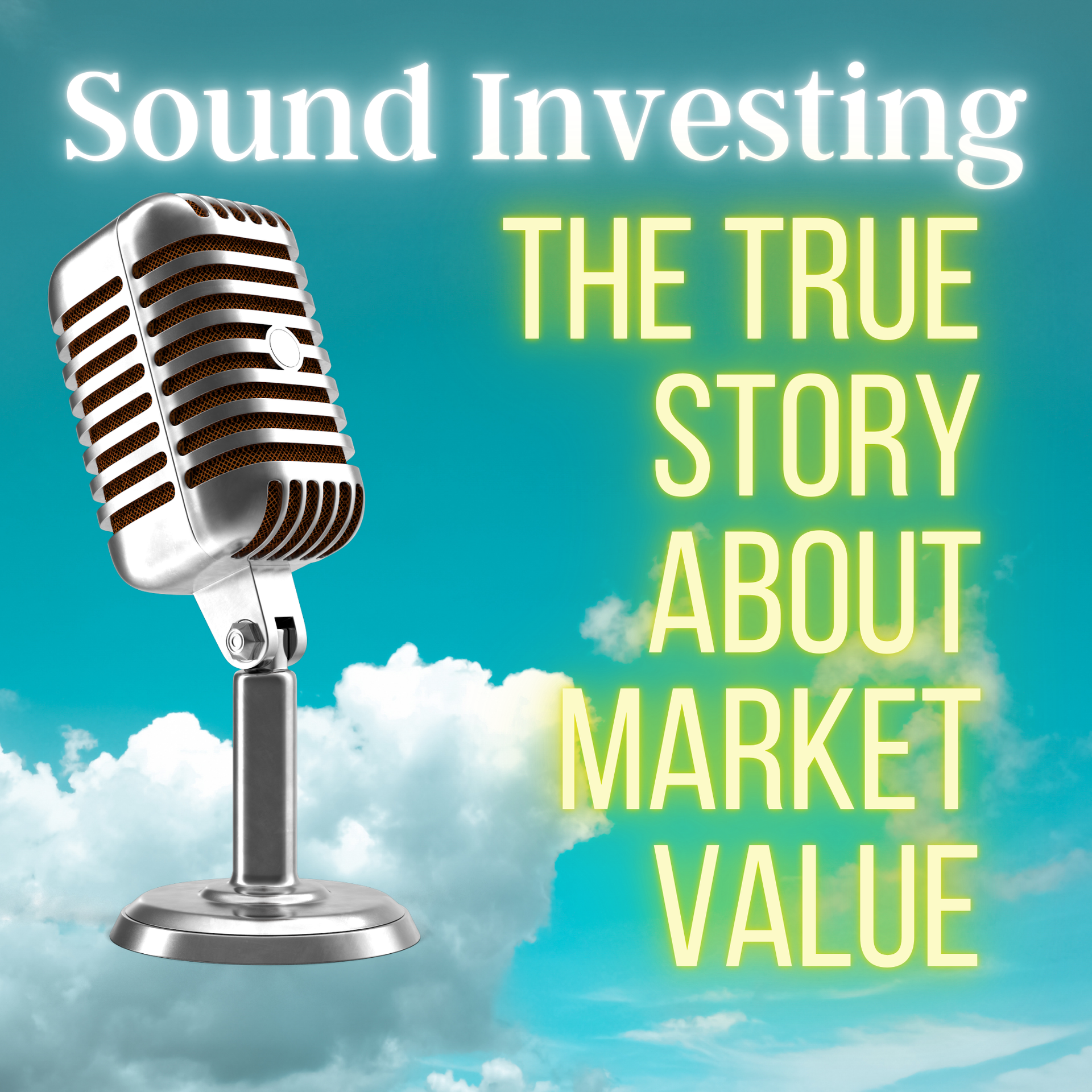
There has been a lot of anti small cap value articles and podcasts over the last several years. I have been asked many times whether I think the small cap value premium is a thing of the past.In this podcast I have addressed the most commonly discussed criticisms of small cap value. During the presentation I reference a blog entitled," Small-Cap Value Stocks: Diversification or Di-WORSE-fication? " The Early Retirement Now newsletter is written by Karsten Jeske, PhD, CFA. Here is a video of a friendly debate that Karsten and I had on the “Forget About Money” podcast. Listeners will learn that Karsten and I have very different beliefs about what returns best represent the small cap value premium. I reference the real time Morningstar performance results of DFFVX (2000 to present), DFSVX (1993 to present) and AVUV (2019 to present). During my discussion I reference Table G-1b, Fine Tuning Table: S&P 500 vs. US SCV Equity Porfolio - Out-Performance and Table H2a - Sound Investing Portfolios: Comparison Data I also referenced a Q&A response on Truth Teller Rob Berger regarding his personal take on small cap value in his own portfolio . I also mention the interview with Jim Dahle at the 2024 Bogleheads Conference. https://www.youtube.com/watch?v=8C3KhRJCwCQ
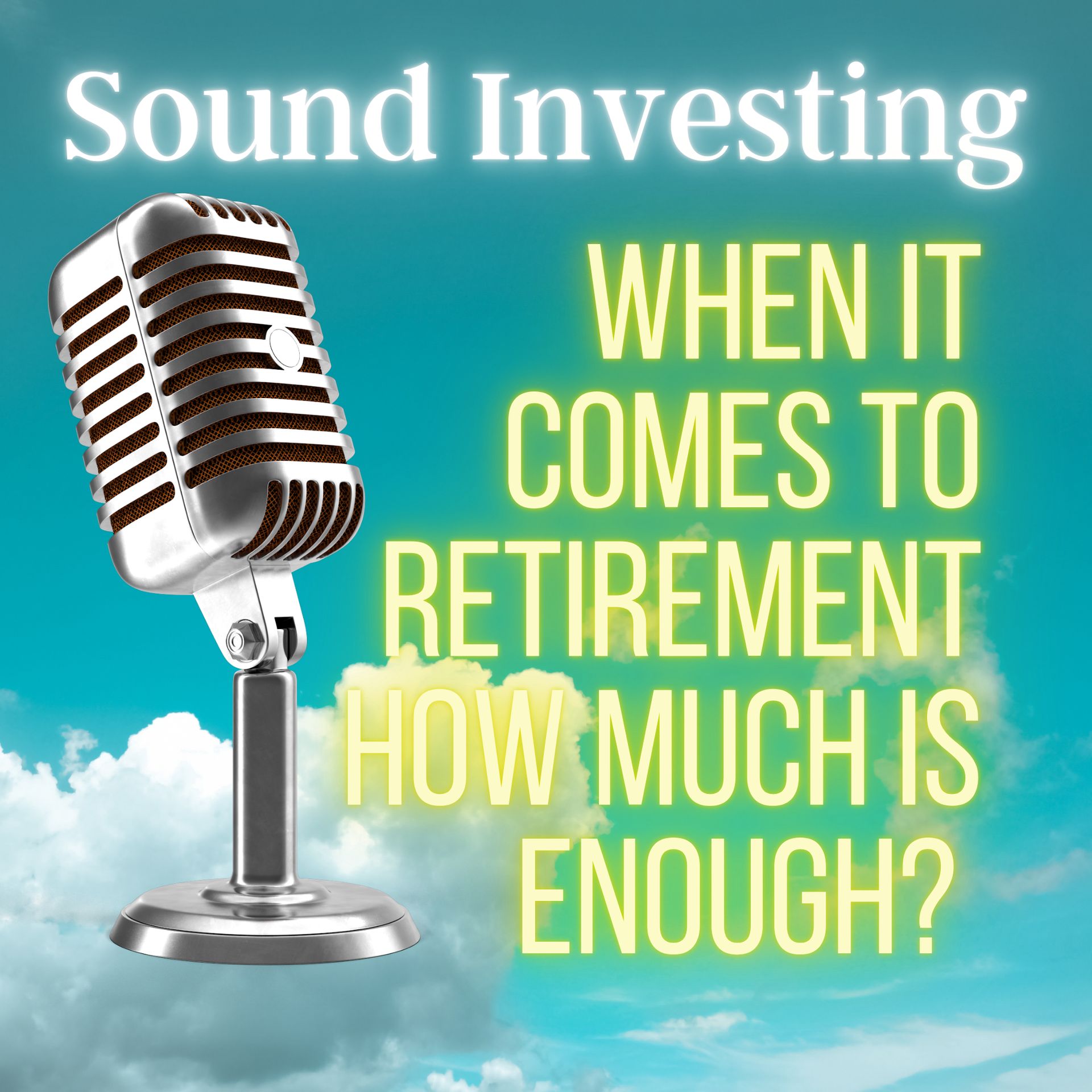
The following are Dr. Pass’ note to his podcast: "This week to conclude 2024 we speak with noted investment expert Mr. Paul Merriman to discuss a few topics related to personal finance and investing. First we tackle the notion of having 'enough' to retire. Is there a magic value and how would one think about this? Why is an S&P 500 Index or Total US Stock Market Index a fine 'core' investment and how might one possibly improve upon its performance? What are some of the psychological hurdles we have as investors and potential retirees? Mr. Merriman reviews these and other topics on our end of year episode.” Paul Merriman's Website Paul's "Quilt" Chart Paul's "Bootcamp" page Last Year's episode of Pediheart was replayed on Mr. Merriman's site Paul's book "We're Talking Millions"

On December 26, 2019 Paul recorded a podcast entitled, “Could This Be the #1 Reason to Invest in Index Funds?” We were shocked to learn that over 1,000,000 investors opened the podcast. In this podcast he addresses the topic again in “Could This Be the #1 Reason to Invest in Index Funds? Part 2” The podcast reviews the well established index advantages and adds one that may be the biggest reason an investor is able to find comfort staying the course in an index fund for the rest of their life. This might be a good podcast to share with your young adult children.

Paul, Daryl, and Chris discuss the risks of investing and life. Paul starts with an introduction and admission of his challenges managing risks related to diet and health. He then gets Chris and Daryl to chime in with their definitions and perspectives on risk. Daryl then shares a framework for evaluating risk from his days as a systems engineer. The framework looks at risks in two dimensions: likelihood and impact (or severity). He describes how the framework can help prioritize which risks to mitigate and gives examples of how some financial risks might be reduced in both dimensions. Chris is reminded of the book "Die with Zero," and mentions how risks extend beyond finances to experiences. Paul, Chris, and Daryl then discuss some of their challenges in managing the risks of their own portfolio allocations and how their behaviors differ from what might be considered ideal. This leads to discussing the dangers of learning the wrong lessons with examples from inside and outside the personal finance world. Paul reads from the Jonathan Clemens article that inspired this podcast: "The Risks We Miss." https://humbledollar.com/2024/07/the-risks-we-miss/ Paul then closes out the podcast. Outtakes include Paul and Chris discussing how the Best-in-Class ETFs can help mitigate risk, and what Daryl wants for Christmas.lmerriman.com, for hundreds of free podcasts, articles, recommendations for ETFs, mutual funds, 401k plans and free eBooks and more.

While I was at the Bogleheads conference in Minneapolis earlier this year, I had a lengthy interview with Paula Pant. I enjoyed the interview and found lots of questions and comments under the YouTube presentation that I wanted to answer. While I wrote short comments on the site, I decided many of the questions were worthy of more discussion.Here is a link to the YouTube interview and podcast : #1. “Most of my holdings are in cash as I cashed out last time the market went down. How do I stay invested and think long-term to help me ride out the ups and downs of the market?” 02:17 #2. “I’m just beginning my investment journey and planning to put 85K into dividend stocks so that I will be making up to 30% per year in dividend returns.” https://rethinking65.com/the-preference-for-dividend-paying-stocks-is-irrational/ 10:41 #3. "What Fidelity Funds do you recommend to build your 4 Fund Portfolio ?" 15:00 #4. "How often do you recommend rebalancing the 4 Fund Portfolio?" 17:02 #5 "Nobody knows what’s going to happen next so we should practice some humility and CHOOSE a strategy with a long-term edge." What is the edge and what else do you need to know dividend stocks k? 21:02 #6. "I”m not looking to beat the S&P 500…I’m more than happy with the returns I get from it.” Does that mean it’s right for you? 24:36 #7. In response to Paul's recommendation of the 4 Fund Portfolio this is what one viewer said, “For what it's worth, backtesting shows his proposed fund portfolio does not do better than VTI or VOO.” Paul responds. 28:32 #8. "The only small cap value available in my 401k is DFSVX which has an expense ratio of .30%. Is this expense ratio too high? 32:32 #9. "Can you give ETF recommendations for all of the equity asset classes?" Here are the Best In Class recommendations . 35:23 #10. Please recommend more information on how I might adjust my 401k. We're talking millions and 2 funds for life . 36:37 #11 "Would you accomplish similar performance results by setting up a strategy using sector diversification instead of asset class diversification?" 40:01 #12 "I’m helping my 17 year old daughter with her Roth IRA. What do you think about shooting for an all equity 40/30/30 portfolio of US small cap value/S&P 500/Total International market?” 42:23 #13. “This guy has been pushing small cap value and underperforming for years. Sorry, no thanks." 44:25

The podcast is dedicated to answering questions about: Target date funds: “Do you think someone that simply maxes out their retirement accounts with target date funds and total market funds will be “fine”? Selecting a distribution strategy: What advice can you give to a DIY investor who is trying to decide what to do about how they access their money to live on and how much to take out? Buy and Hold vs. market timing: I believe in buy and holding index funds, with low expenses. I don’t think I need to pay an investment advisor to help me do that. I see the Merriman Wealth Management firm offers buy and hold and market timing services and charges AUM fees. This is very different from what you suggest on your Foundation website. What is your relationship with the Merriman firm and what are your beliefs about market timing? All small cap value portfolio: Do you know investors who are investing 100% of their portfolios in small cap value? It seems like it might be a smart thing to do with very long term investments for a very young person. Time to start market timing: I am thinking about using timing with a large amount of new money. Who do you use for the market timing aspect of your portfolio management? Flexible vs. fixed distribution strategies: "I believe you expect that a flexible withdrawal strategy will pay out more money to live on, as well as leave more money to heirs. Bill Bengen seems to believe that this strategy is not sustainable over the long term even if a person had enough money to accept lower annual withdrawal amounts in market draw downs. Flexible withdrawal strategies make sense to me but there isn’t much writt en about them. What am I missing?” The answer to this question includes 4 distribution tables: Table D1.4 - Fixed Distributions: S&P 500 Equity Portfolio - Conservative ($40,000/yr) Table F1.4 - Flexible Distributions (Conservative-4.0%/yr): S&P 500 Equity Portfolio Table D4.4 - Fixed Distributions (Conservative-$40,000/yr): US 4-Fund Equity Portfolio Table F4.4 - Flexible Distributions (Conservative-4.0%/yr): US 4-Fund Equity Portfolio Finally Paul reads four Ben Carlson quotes about the nature of bull and bear markets. Paul makes reference to a table of annual Price to Earning (P/E)ratios starting in 1871 and another comparing the S&P 500 Price to Book Value from 2000 to 2024.

